Online FirstMore>
Articles in press have been peer-reviewed and accepted, which are not yet assigned to volumes /issues, but are citable by Digital Object Identifier (DOI).
Display Method:
In Press
, Available online
doi: 10.12206/j.issn.2097-2024.202401002
Abstract:
Objective To evaluate the application effect of joint inventory management method in drug procurement and control management in multiple hospital areas. Methods Based on the joint inventory management model, four pilot drugs were selected from a certain group hospital by reasonable data processing methods for research. The effects of the model application were compared and analyzed from aspects such as inventory cost, turnover situation, and supply situation. Results After applying the joint inventory management model led by the central hospital, the inventory and amount of drugs in the three pilot hospitals were significantly reduced, with the inventory reduced by 31.93% and the average inventory amount decreased by 16.23%; The inventory turnover days had significantly decreased, with the turnover days of all three branches decreasing by more than one day; The drug shortage rate had significantly decreased, with the most significant change among the pilot drugs being the doxorubicin liposome injection, which had a 6.7% decrease in the shortage rate; The comparison results of each group of data showed statistical significance (P<0.05). Conclusion Adopting a central hospital led joint inventory management model in multiple hospital areas could significantly improve the effectiveness of drug procurement management and inventory management, which enhanced the efficiency of hospital fund utilization.
Accepted Manuscript
, Available online
doi: 10.12206/j.issn.2097-2024.202310044
Abstract:
Objective To systematically evaluate the efficacy and safety of nivolumab in the treatment of non-small cell lung cancer. Methods PubMed, Embase, Cochrane Library, China National Knowledge Infrastructure(CNKI), Weipu Chinese Science and Technology Journal Database, Wanfang Medical Database were searched for articles published from the establishment of the database to March 2023. Published randomized controlled trials of nivolumab in the treatment of patients with non-small cell lung cancer were selected, overall survival, progression-free survival, and adverse reaction rate as outcome indicators were used. A meta-analysis using STATA version 13.1 statistical software was conducted. Results A total of 8 phase Ⅲ randomized controlled trials involving 4945 subjects were included. Compared with the traditional chemotherapy group, patients in the nivolumab group had significantly reduced risk of death in terms of overall survival [HR=0.73, 95% CI=0.65-0.82, P<0.05], and in terms of progression-free survival, nivolumab significantly reduced the risk of recurrence compared with the traditional chemotherapy group [HR=0.74, 95% CI=0.63-0.88, P<0.05]. In terms of safety, there was no significant difference between the nivolumab group and the traditional chemotherapy group for diarrhea, but the incidence of nausea, neutropenia, anemia, decreased appetite, and fatigue in the nivolumab group was lower than that in the traditional chemotherapy group. However, it should be worth noting that the incidence of immune-related adverse events such as rash was higher in the nivolumab group than in the traditional chemotherapy group, and the difference was statistically significant [OR=3.85, 95%CI=2.05~6.25, P<0.05]. Conclusions Compared to traditional chemotherapy, the efficacy and safety of nivolumab in the treatment of non-small cell lung cancer were better, but the risk of immune-related adverse events increased.
Accepted Manuscript
, Available online
doi: 10.12206/j.issn.2097-2024.202404082
Abstract:
Objective To establish an UPLC-MS/MS method for determinating content of three paclitaxel fatty acid esters such as paclitaxel myristate (PTX-MA), paclitaxel palmitate (PTX-PA) and paclitaxel myristate (PTX-SA) in mouse plasma, and preliminarily investigate the pharmacokinetic characteristics of their liposomes in mice. Methods Eclipse Plus C8 chromatography column (2.1 mm×50 mm) was used with different proportions of 0.2% formic acid aqueous solution (A) and methanol (B) mixture as mobile phase for gradient elution at a flow rate of 0.3 ml/min. The collum temperature was 30 ℃. The sample injection volume was 10 μL. The triple quadrupole mass series spectrometer was used as multi-reaction monitoring (MRM). Results PTX-MA, PTX-PA and PTX-SA all exhibited a good linear relationship in the range of 5.0~500.0 ng/ml (r>0.9950). Their RSD of precision, stability, extraction recovery rate and matrix effect test results was all less than 10%. The half-lives (T1/2) for liposomes of three paclitaxel fatty acid esters PTX-MA-L、PTX-PA-L and PTX-SA-L in mice were 14.78 h, 44.49 h and 69.32 h individually, and their clearance rates (CL) were 29.06 L·kg/h, 24.94 L·kg/h and 13.74 L·kg/h, respectively. Conclusion This method had high specificity, sensitivity, easy operation and good stability, which could be used for the determination of paclitaxel fatty acid esters in mouse plasma. The results of pharmacokinetic studies in mice showed that T1/2 for paclitaxel fatty acid esters were significantly prolonged, and the clearance rate were significantly reduced with the length of fatty acid carbon chains increasement, which indicated that esterification of paclitaxel with different chain length saturated fatty acids could obviously alter its in vivo pharmacokinetic properties, which provided scientific basis for the research and development of nano formulations of paclitaxel fatty acid ester prodrug.
In Press
, Available online
doi: 10.12206/j.issn.2097-2024.202312054
Abstract:
Objective To explore the role and potential mechanisms of all-trans retinoic acid (ATRA) on activation and oxidative stress of hepatic stellate cell (HSC). Methods Platelet-derived growth factor (PDGF-bb, 10 ng/ml) was applied to induce the activation of HSCs, which was then treated with ATRA at a dosage of 5 μmol/L for 48 h. The effects of ATRA on HSC activation were evaluated by detecting changes in cell growth viability and phenotypic marker expression. The effects of ATRA on HSC oxidative stress were evaluated by detecting changes in intracellular reactive oxygen species (ROS), glutathione[reduced] (GSH) and malondialdehyde (MDA), and the expression of antioxidant genes. The effects of ATRA on HSC autophagic activity were evaluated by detecting changes in autophagy marker expression and autophagic flow. Results Compared with the PDGF-bb group, the cell viability was significantly reduced in ATRA-treated HSCs (P<0.01), as well as the expression of α-SMA and Collagen I. The intracellular levels of ROS and MDA were significantly reduced in ATRA-treated HSCs (P<0.01), whereas the GSH level was significantly increased (P<0.01). The expression levels of antioxidant genes (NRF2, HO-1, and ATF4), were significantly higher in ATRA-treated HSCs than those in the normal ones under PDGF-bb condition (P<0.01). Meanwhile, the expression of autophagy markers Beclin 1 and LC3 Ⅱ/I, and signal of autophagy flow in ATRA-treated HSCs were found to be significantly reduced (P<0.01). Conclusion ATRA significantly inhibited PDGF-bb-induced HSC activation and reduced the level of oxidative stress and autophagic activity of HSCs, which had potential applications in the prevention and treatment of liver fibrosis.
In Press
, Available online
doi: 10.12206/j.issn.2097-2024.202303023
Abstract:
Objective To make the cost-effectiveness analysis of pembrolizumab and platinum chemotherapy as the first-line treatment for advanced non-small cell lung cancer (NSCLC) in the population with tumor proportion score (TPS) ≥ 1% of PD-L1, and to provide some reference for the clinical use and future price negotiation of pembrolizumab. Methods Based on Pubmed database, the published RCT literatures of pembrolizumab were analyzed, and the survival data were extracted, combined with the treatment plan of Jiangsu Province Hospital, the Markov model were established to simulate the cost and health effectiveness of patients for twenty years, and the stability of the model was tested by one-way sensitivity analysis and probability sensitivity analysis. Results Twenty years later, the cost-effectiveness ratio of pembrolizumab group and chemotherapy group was ¥58 517.60/quality adjusted life month (QALM), ¥41 213.08/QALM. Compared with the chemotherapy group, the incremental cost effective ratio (ICER) was ¥104 485.36/QALM. Conclusion When the willingness to pay (WTP) value was ¥30 902/ QALM, the pembrolizumab therapy is not more cost-effective advantages than platinum chemotherapy, and the sensitivity analysis showed that the results of the model were relatively stable.
Accepted Manuscript
, Available online
doi: 10.12206/j.issn.2097-2024.202211047
Abstract:
Objective To study the sedative and hypnotic effects of Yening Capsules and investigate its bioactive mechanism in mice. Methods The mice were randomly divided into control group, estazolam group (0.8 mg/kg), low, medium and high-dose Yening Capsules groups (400, 600 and 800 mg/kg). The locomotor activity, latency to persistent sleep, sleep duration and sleep rate were determined respectively in mice via the open field test and injection of pentobarbital sodium in subthreshold and suprathreshold doses. The content of GABA, 5-HT, DA and NE in brain tissue of mice were detected by enzyme-linked immunosorbent assay(ELISA). Results Compared with the control group, Yening Capsules medium and high dose group (P<0.05, P<0.01)significantly decreased the locomotor activity of mice; The sleep latency in Yening Capsules medium and high dose group were significantly shorten (P<0.05, P<0.05)and the sleep duration (P<0.05, P<0.01)were extended; the sleep rate of Yening Capsules medium and high dose groups (P<0.05, P<0.01) was significantly increased. Conclusions Yening Capsules had obvious sedative and hypnotic effects, and its mechanism may be related to the increasement of GABA, 5-HT, DA and NE level in brain tissue of mice.
In Press
, Available online
doi: 10.12206/j.issn.2097-2024.202306040
Abstract:
As a new class of acid inhibitors, potassium-competitive acid blocker(P-CAB)inhibits the conformational transition of H+, K+-ATPase with subsequent suppression of H+, K+ exchange by binding reversibly near the K+ binding site of H+, K+-ATPase, which results in the inhibition of gastric acid secretion in a K+-competitive manner. The unique structure and novel mechanism of P-CAB contribute to the pharmaceutical characteristics superior to PPI, making it a new alternative for acid-related diseases(ARDs). Progress on pharmaceutical characteristics of P-CAB were reviewed in this paper.
As a new class of acid inhibitors, potassium-competitive acid blocker(P-CAB)inhibits the conformational transition of H+, K+-ATPase with subsequent suppression of H+, K+ exchange by binding reversibly near the K+ binding site of H+, K+-ATPase, which results in the inhibition of gastric acid secretion in a K+-competitive manner. The unique structure and novel mechanism of P-CAB contribute to the pharmaceutical characteristics superior to PPI, making it a new alternative for acid-related diseases(ARDs). Progress on pharmaceutical characteristics of P-CAB were reviewed in this paper.
In Press
, Available online
doi: 10.12206/j.issn.2097-2024.202305011
Abstract:
Objective To explore the effect of Bajitianwan(BJTW)formula on bone formation of Aβ-injured osteoblasts and its mechanism. Methods Osteoblasts isolated from neonatal 24-hour Wistar rats were used for the study, and osteoblasts were subjected to damage with Aβ1-42 oligomers, and pharmacological intervention was performed with the aqueous extract of BJTW formula. The MTT assay, alkaline phosphatase(ALP)activity assay, catalase(CAT)activity assay, superoxide dismutase(SOD)activity assay, glutathione(GSH)activity assay and malondialdehyde(MDA)activity assay were carried out respectively. The expression levels of bone morphogenetic protein 2(BMP2), osteogenic specific transcription factor(RUNX-2)and osteoprotective protein(OPG)were detected by Western blotting. After confirming the effect of BJTW formula on Aβ-injured osteoblasts, the network pharmacology method was used to predict the potential pathways. Results The BJTW formula significantly promoted the proliferation of Aβ-injured osteoblasts, increased ALP, SOD and GSH activity, inhibited MDA activity, and promoted the expression of bone formation-related proteins BMP2, RUNX-2 and OPG. Network pharmacological analysis showed that the effect of ameliorating of Aβ-injured osteoblasts by BJTW formula was mainly mediated by AGE-RAGE, PI3K-Akt, MAPK and neuroactive ligand-receptor interaction signaling pathways. Conclusion In this study, the effect of BJTW formula on improving the osteoblasts damaged by Aβ is confirmed for the first time, and its related mechanism is explored based on network pharmacology method. The results lay a strong foundation for the clinical application of traditional formula BJTW against osteoporosis.
Accepted Manuscript
, Available online
doi: 10.12206/j.issn.2097-2024.202309047
Abstract:
Objective To explore the conditions for compulsory licensing of pharmaceutical patents and the steps for implementing compulsory licensing of pharmaceutical patents. Methods The current situation and problem of compulsory licensing of pharmaceutical patents in China were analyzed by collecting the relevant laws and regulations in China, United States, India, and the World Trade Organization. the feasible practices of compulsory licensing of pharmaceutical patents among the other countries and organizations were compared. Results China needs to improve the system of compulsory licensing of pharmaceutical patents, clarify the implementation details, strengthen policy guidance, and encourage cooperation between government and enterprises to ensure the smooth implementation in emergency situations. Conclusion Compulsory licensing system and implementation rules in China for pharmaceutical patents should be supplemented and improved by absorbing the useful provisions of international organizations and relevant countries, so as to achieve the pharmaceutical supply in emergency situations and meet the needs of public health.
Accepted Manuscript
, Available online
doi: 10.12206/j.issn.2097-2024.202303048
Abstract:
Objective To predict the potential Q-markers of Abri herba based on network pharmacology and molecular docking and to establish a quality control characteristic. Methods The network relationship of "Abri herba - component - target - pathway" was constructed by using a variety of databases and the method of network pharmacology. The potential Q-markers of Abri herba were predicted and then the characteristic Chromatogram of Abri herba was established by high performance liquid chromatography Results Through the network pharmacological prediction, it was found that the components of abrine hypaphorine、schaftoside in Abri herba were closely associated with the main targets, such as AKT1, STAT3, HIF1A, GRB2, MMP9, which could act on HIF-1, PI3K-Akt, JAK-STAT and other signaling pathways and have good pharmacological activities to be potential Q-markers of Abri herba. Then HPLC was used to establish the characteristic according to retention time. Conclusion Through network pharmacology and molecular dock-prediction combined with HPLC detection, the characteristic chromatogram was established with the components of abrine hypaphorine, schaftoside as Q-markers, which could control the quality of Abri herba by combining the components and pharmacological activities.
Accepted Manuscript
, Available online
doi: 10.12206/j.issn.2097-2024.202310057
Abstract:
Objective: To establish the HPLC fingerprint and pesticide residue detection methods for different kinds of rhubarb, and to evaluate the quality of rhubarb comprehensively. Methods: 20 batches of three types of rhubarb were collected and analyzed by high-performance liquid chromatography. The mobile phase was methanol-0.1 % phosphoric acid solution; Gradient elution; Column temperature of 35 ℃; Detection wavelength of 254 nm; Flow rate 1.0 ml/min; And cluster analysis was performed on the results. Direct extraction method was used and high-performance liquid chromatography-tandem mass spectrometry and gas chromatography-tandem mass spectrometry were established, 33 prohibited pesticides from different sources and origins of rhubarb were detected. Results: The similarity among the fingerprint spectra of three sources of rhubarb, namely Rheum palmatum L., Rheum tanguticum Maxim.ex Balf., and Rheum officinale Bail1., and their control fingerprint spectra was>0.95. 20 batches of rhubarb samples were divided into 3 categories by cluster analysis. No 33 prohibited pesticides was detected in rhubarb samples from different regions. Conclusion: The quality of three kinds of rhubarb was significantly different. The established HPLC fingerprint and the method of banning agricultural residues were stable, reliable, simple and accurate, which could provide a basis for quality control evaluation of rhubarb.
Objective: To establish the HPLC fingerprint and pesticide residue detection methods for different kinds of rhubarb, and to evaluate the quality of rhubarb comprehensively. Methods: 20 batches of three types of rhubarb were collected and analyzed by high-performance liquid chromatography. The mobile phase was methanol-0.1 % phosphoric acid solution; Gradient elution; Column temperature of 35 ℃; Detection wavelength of 254 nm; Flow rate 1.0 ml/min; And cluster analysis was performed on the results. Direct extraction method was used and high-performance liquid chromatography-tandem mass spectrometry and gas chromatography-tandem mass spectrometry were established, 33 prohibited pesticides from different sources and origins of rhubarb were detected. Results: The similarity among the fingerprint spectra of three sources of rhubarb, namely Rheum palmatum L., Rheum tanguticum Maxim.ex Balf., and Rheum officinale Bail1., and their control fingerprint spectra was>0.95. 20 batches of rhubarb samples were divided into 3 categories by cluster analysis. No 33 prohibited pesticides was detected in rhubarb samples from different regions. Conclusion: The quality of three kinds of rhubarb was significantly different. The established HPLC fingerprint and the method of banning agricultural residues were stable, reliable, simple and accurate, which could provide a basis for quality control evaluation of rhubarb.
Accepted Manuscript
, Available online
doi: 10.12206/j.issn.2097-2024.202310049
Abstract:
Objective Pulmonary oxygen poisoning resulting from hyperbaric oxygen, frequently occurs in specialized operations, without any current effective prevention or treatment measures. To elucidate the impact of neostigmine(NEO)in combination with anisodamine (ANI)(neoscopolamine)on pulmonary oxygen toxicity and its mechanism. Methods the animal model of pulmonary oxygen poisoning was established. C57BL/6 mice were exposed to 2.5ATA 99.9% oxygen for 6 hours. The control group mice were injected with normal saline ip, while the treatment group mice received injections of ANI (25mg/kg, ip)and NEO(50μg/kg, ip). Lung tissues were collected and stained with HE to observe any pathological injuries after exposure. Evans blue stain was utilized to identify lung permeability, wet/dry lung ratio, and protein concentration in the bronchoalveolar lavage fluid (BALF)to assess the lung injury’s severity. The modifications in inflammatory factors, oxidative stress indicators, and iron content in lung tissue were assessed. Results The results showed that the 2.5ATA 99.9% oxygen-exposed group experienced a significant worsening of lung injury, as well as increased lung permeability, lung wet/dry ratio, and protein content in alveolar lavage fluid when compared to the control group. Moreover, mRNA levels of pro-inflammatory cytokines IL-1β, IL-6, TNF-α, and IFN-γ in the lung tissue of the model group were significantly elevated, while the levels of anti-inflammatory cytokines IL-4 and TGF-β were significantly reduced. The oxidative index MDA also significantly increased, while the antioxidant index GSH significantly decreased. Additionally, the expression of GPX4, a marker of ferroptosis, increased with an increase in iron content. Neoscopolamine treatment successfully reversed those effects. Conclusion The combined use of ANI and NEO has a protective effect on pulmonary oxygen poisoning. Neoscopolamine may inhibit inflammation and oxidative stress by activating the cholinergic anti-inflammatory pathway, thereby reducing the content of free iron in lung tissue and finally inhibiting cell ferroptosis.
Accepted Manuscript
, Available online
doi: 10.12206/j.issn.2097-2024.202306020
Abstract:
Objective To establish a central cutting two-dimensional liquid chromatography for the determination of lamotrigine in human plasma. Methods External standard method was used. The first dimensional chromatographic column: SNCB(T)-1A(silica gel, 4.6 mm×50 mm, 5 μm), mobile phase A:VCV-1D mobile phase, flow rate: 0.4 ml/min; mobile phase B: water, flow rate: 1.0 ml/min; second dimensional chromatographic column: Symmetry C18 (4.6 mm×250 mm, 5 μm), mobile phase: acetonitrile-10 mmol/L ammonium acetate solution(V/V=25∶75), flow rate: 1.0 ml/min; Intermediate column: SBX 4-MA(resin, 3.0 mm×10 mm, 5µm). The UV detection wavelength: 306 nm, the column temperature: 45 ℃, and the injection volume: 200 μl. Results The linear range of lamotrigine was 1.24-39.50 μg/ml, the lower limit of quantification was 1.24 μg/ml, the detection limit was 0.02 μg/ml, the intra-day precision RSD was less than 5%, the day-to-day precision RSD was less than 10%, the variation of intra-day accuracy ranged from 102.17% to 111.17%, and the daytime accuracy variation ranged from 99.80% to 107.31% the recovery RSD was less than 5%, and the variation range was 89.95% -96.16%. After 24 hours storage at room temperature, repeated freezing and thawing for 3 times and storage at-40 ℃ for 2 weeks, the ratio of the measured value / labeled value ranged from 87.01% to 115.88%. Conclusion In this study, a method with simple operation, good stability, high sensitivity and good reproducibility was established, which could be suitable for clinical monitoring of blood concentration of lamotrigine and provides reliable monitoring data support for clinical individualized medication guidance.
Objective To establish a central cutting two-dimensional liquid chromatography for the determination of lamotrigine in human plasma. Methods External standard method was used. The first dimensional chromatographic column: SNCB(T)-1A(silica gel, 4.6 mm×50 mm, 5 μm), mobile phase A:VCV-1D mobile phase, flow rate: 0.4 ml/min; mobile phase B: water, flow rate: 1.0 ml/min; second dimensional chromatographic column: Symmetry C18 (4.6 mm×250 mm, 5 μm), mobile phase: acetonitrile-10 mmol/L ammonium acetate solution(V/V=25∶75), flow rate: 1.0 ml/min; Intermediate column: SBX 4-MA(resin, 3.0 mm×10 mm, 5µm). The UV detection wavelength: 306 nm, the column temperature: 45 ℃, and the injection volume: 200 μl. Results The linear range of lamotrigine was 1.24-39.50 μg/ml, the lower limit of quantification was 1.24 μg/ml, the detection limit was 0.02 μg/ml, the intra-day precision RSD was less than 5%, the day-to-day precision RSD was less than 10%, the variation of intra-day accuracy ranged from 102.17% to 111.17%, and the daytime accuracy variation ranged from 99.80% to 107.31% the recovery RSD was less than 5%, and the variation range was 89.95% -96.16%. After 24 hours storage at room temperature, repeated freezing and thawing for 3 times and storage at-40 ℃ for 2 weeks, the ratio of the measured value / labeled value ranged from 87.01% to 115.88%. Conclusion In this study, a method with simple operation, good stability, high sensitivity and good reproducibility was established, which could be suitable for clinical monitoring of blood concentration of lamotrigine and provides reliable monitoring data support for clinical individualized medication guidance.
Accepted Manuscript
, Available online
doi: 10.12206/j.issn.2097-2024.202401033
Abstract:
Objective To study the mechanism of antidepressant effect of Baihe Zhimu decoction based on NLRP1 inflammasome. Methods A chronic unpredictable mild stress(CUMS)induced depression mouse model was constructed. C57BL/6J mice were randomly divided into a control group, CUMS group, low-dose Baihe Zhimu decoction group, high-dose Baihe Zhimu decoction group, and MDP group(NLRP1 activator). After administration continuously for 4 weeks, the behavioral characteristic of mice was investigated. The levels of mice hippocampal inflammatory factors IL-1β、 IL-6, TNF-α, and neurotransmitters 5-HT, NE, and DA were detected by ELISA. The expression of inflammasome related proteins NLRP1, ASC, and caspase-1, as well as related proteins in BDNF/TrkB and ERK/AKT/mTOR signaling pathway were detected by Western blot. Immunofluorescence was used to detect changes in BDNF expression in the hippocampus of mice. Results Baihe Zhimu decoction inhibited the activation of NLRP1 inflammasomes in the hippocampus of CUMS mice, improved their behavioral characteristics, increased the level of neurotransmitters in the hippocampus, and reduced the inflammatory response. The NLRP1 activator MDP reversed the above effects of Baihe Zhimu decoction. Baihe Zhimu decoction increased BDNF, TrkB expression, and phosphorylation levels of ERK, AKT, and mTOR proteins, which could be reversed by MDP. Conclusion Baihe Zhimu decoction improved depression like behavior in CUMS mice by inhibiting NLRP1 inflammasome activation and hippocampal neuroinflammatory response, and thereby activating BDNF/TrkB and ERK/AKT/mTOR signaling pathway.
Accepted Manuscript
, Available online
doi: 10.12206/j.issn.2097-2024.202310015
Abstract:
Objective To explore the ideas and measures to further optimize China’s drug emergency approval system by comparing the drug emergency approval systems in China and other countries. Methods The current situation of China’s drug emergency approval system was analyzed and compared with the relevant systems of the United States, the European Union and Japan. Results The goal of drug emergency approval in other countries is clearly positioned to accelerate the review and listing of urgently needed clinical drugs for the purpose of clinical needs, forming a multi-channel, multi-mode and multi-mechanism priority review system covering the whole process, and the regulatory system is clear, complete, and operable. The corresponding approval system in China started late and is in the stage of continuous improvement, which needs to be improved in terms of system construction, government functions, personnel optimization, and post-market supervision. Conclusion Drug regulatory authorities in China should summarize their past work experience and draw on some feasible approval models and regulatory approaches in foreign countries, further improve the system and process of the drug emergency approval system and enhance the efficiency of drug approval and the ability to protect drugs in response to emergencies.
Accepted Manuscript
, Available online
doi: 10.12206/j.issn.2097-2024.202307037
Abstract:
[ Abstract] Lateral flow immunochromatography assay is a new instantaneous detection technology that employs a chromatographic membrane and labeling materials for detection. This detection technology is convenient, fast, and inexpensive, and is therefore widely used in a number of different fields, such as biomedicine, disease detection, food safety, environmental protection, and so on. Traditional lateral flow immunochromatography assay relies on visual observation and provides only qualitative or semi-quantitative results. By utilizing various types of markers and sensitive detection devices, lateral flow immunochromatography assay enables quantitative and multi-component detection of the analytes. The research progress on the lateral flow immunoassay detection system and its current applications in the context of recognition elements, labeling materials, and detection instruments were reviewed in this paper.
[ Abstract] Lateral flow immunochromatography assay is a new instantaneous detection technology that employs a chromatographic membrane and labeling materials for detection. This detection technology is convenient, fast, and inexpensive, and is therefore widely used in a number of different fields, such as biomedicine, disease detection, food safety, environmental protection, and so on. Traditional lateral flow immunochromatography assay relies on visual observation and provides only qualitative or semi-quantitative results. By utilizing various types of markers and sensitive detection devices, lateral flow immunochromatography assay enables quantitative and multi-component detection of the analytes. The research progress on the lateral flow immunoassay detection system and its current applications in the context of recognition elements, labeling materials, and detection instruments were reviewed in this paper.
Accepted Manuscript
, Available online
doi: 10.12206/j.issn.2097-2024.202305032
Abstract:
Objective To explore the clinical efficacy of dulaglutide combined with metformin in the treatment of obese patients with type 2 diabetes mellitus(T2DM). Methods A total of 200 obese patients with T2DM who were treated in Shanghai Jiading District Anting Hospital from January 2021 to January 2023 were randomly divided into liraglutide group(n=100)and dulaglutide group(n= 100). The liraglutide group was treated with liraglutide combined with metformin, and the dulaglutide group was treated with dulaglutide combined with metformin. Both groups were treated for 3 months. The body metabolic indexes [fasting blood glucose(FBG), 2 h postprandial blood glucose(2 h PBG), hemoglobin(HbA1 c), total cholesterol(TC), triglyceride(TG)], body fat composition [body fat rate, body mass index, subcutaneous fat rate of limbs, visceral fat index] and serum adipokines(adiponectin, neuropeptide Q(NPQ), asprosin, irisin)levels were compared before treatment and 3 months after treatment. The clinical efficacy and adverse reactions of the two groups were observed. Results After 3 months of treatment, FBG, 2 h PBG, HbAlc, TC, TG, body fat rate, body mass index, subcutaneous fat rate of limbs, visceral fat index and asprosin in the two groups were lower than those before treatment, and those in the dulaglutide group were lower than those in the liraglutide group(P<0.05). After 3 months of treatment, the levels of serum adiponectin, NPQ and irisin in the two groups were higher than those before treatment, and the increase in the dulaglutide group was greater than that in the liraglutide group(P<0.05). The effective rate of dulaglutide group(98.00%)was higher than that of liraglutide group(91.00 %)(P<0.05). There was no significant difference in the incidence of adverse reactions between the two groups(11.00%, 14.00%)(P>0.05). Conclusion Dulaglutide combined with metformin could improve the metabolic status of obese T2 DM patients, regulate body fat composition and serum adipokines, with significant clinical efficacy and safety.
Accepted Manuscript
, Available online
doi: 10.12206/j.issn.2097-2024.202405009
Abstract:
Objective To screen small molecule inhibitors against Fusobacterium nucleatum(Fn) based on commercially available compound libraries, followed to investigate their anti-colorectal cancer activities under Fn intervention in order to obtain novel anti-colorectal cancer lead compounds. Methods Firstly, to validate the promotion of colorectal cancer proliferation on organoid by Fn. Secondly, comparative investigation for the effects of anti-Fn compounds on their in vitro anticancer activity under Fn’s co-incubation with colorectal cancer HCT116 cells. Finally, evaluation for in vivo anticancer efficacy of highly active compounds on nude mouse colon cancer HCT116 transplanted tumor under the intervention of Fn by gavage. Results Fn could significantly promote the proliferation of rectal cancer organoids. 9 ant-Fn active compounds could significantly enhance their in vitro anticancer activity under Fn’s co-incubation with HCT116 cells. Methotrexate had the strongest anti-cancer activity with IC50 as 0.03 μmol/L. The combined use of methotrexate(0.5 mg/kg)and PD-1(5.0 mg/kg)had a stronger anti-tumor effect than their standalone use. Conclusion As new small molecule inhibitor against Fn, methotrexate exhibits good in vitro and in vivo anti-colorectal cancer activity against HCT116 cells and nude mouse xenografts under Fn intervention. This lays the foundation for subsequent structural optimization, and is expected to expand the new indications for methotrexate.
Accepted Manuscript
, Available online
doi: 10.12206/j.issn.2097-2024.202310021
Abstract:
Objective To establish quality evaluation method of Andrographis paniculata standard decoction by UPLC. Methods 21 batches of Andrographis paniculata standard decoctions were prepared according to the standardization method of TCM decoction pieces. The UPLC characteristic chromatograms analysis method was established. With andrographolide as a reference, quantitative analysis of multi-components by single marker(QAMS)was established for new neoandrographolide, 14 deoxyandrographolide and dehydrated andrographolide and the results were compared with the external standard method(ESM)to determine the accuracy of the method. Results Similarity Evaluation System for Chromatographic Fingerprint of TCM(2012 edition)was used to analyze and compare the characteristic chromatograms, and seven common peaks were determined and five were identified including luteolin-7-O-β-D-glucuronide, andrographolide, neoandrographolide, 14-deoxyandrographolide and dehydroandrographolide. The RSDs of content results of each component by QAMS and ESM were all within 3%. Conclusion The determination method is reliable and accurate, which can be used to reflect the intrinsic quality of Andrographis paniculata standard decoction more comprehensively and provide the basis for the quality evaluation of Andrographis paniculata formula granules and other preparations.
Accepted Manuscript
, Available online
doi: 10.12206/j.issn.2097-2024.202402028
Abstract:
It is difficult to treat malignant tumors, neurodegenerative diseases, and vascular diseases. For pathogenesis complexity of these diseases, researchers have focused on finding more drugs with high efficacy and low side effects. As a potential first-in-class drug, RRx-001 is expected to be an important first-line drug in tumor immunology, radiosensitizer and radio protecter. Currently, RRx-001 entered phase III clinical trials. The data of the phase II clinical trials demonstrated its safety and effectivity as a single agent and in combination with first-line clinical drugs. The novel mechanisms of RRx-001 and the result of main clinical trials were summarized, which could be valuable to further optimization and clinical application.
It is difficult to treat malignant tumors, neurodegenerative diseases, and vascular diseases. For pathogenesis complexity of these diseases, researchers have focused on finding more drugs with high efficacy and low side effects. As a potential first-in-class drug, RRx-001 is expected to be an important first-line drug in tumor immunology, radiosensitizer and radio protecter. Currently, RRx-001 entered phase III clinical trials. The data of the phase II clinical trials demonstrated its safety and effectivity as a single agent and in combination with first-line clinical drugs. The novel mechanisms of RRx-001 and the result of main clinical trials were summarized, which could be valuable to further optimization and clinical application.
Accepted Manuscript
, Available online
doi: 10.12206/j.issn.2097-2024.202309009
Abstract:
Objective To evaluate the curative effect of anti-flatulence laxative cream on patients with advanced hepatocellular carcinoma and opioid-associated constipation(OIC). Methods 120 patients with advanced liver cancer complicated with OIC who were treated at the Third Affiliated Hospital of Naval Medical University from June 2021 to December 2022 were selected as the study subjects. The patients were divided into a control group(lactulose + conventional treatment)and an experimental group(anti-flatulence and laxative cream + conventional treatment)using a randomized numerical table method. Two groups were compared in terms of defecation, quality of life, and comprehensive post-treatment evaluation(economic cost, number of occurrences of diarrhea, and whether or not there was a change in the dosage of opioids used). Results After 28 days of intervention, both groups showed better results in relieving OIC(P < 0.05), and the experimental group was significantly better than the control group in terms of the quality of life of patients with advanced hepatocellular carcinoma, the economic cost and the number of diarrhea(P < 0.05). Conclusion In the treatment of OIC in patients with advanced hepatocellular carcinoma, constipation could be relieved by using both topical decongestant laxative cream and oral lactulose solution. Among them, anti-stagnation and laxative cream was more acceptable to patients and superior in terms of quality of life and economic cost, which could be a better choice for improving patient satisfaction and safety.
Comprehensive clinical evaluation of powder-liquid double-chamber bag products : a systematic review
Accepted Manuscript
, Available online
doi: 10.12206/j.issn.2097-2024.202312009
Abstract:
Objective Compared with traditional powder injection, the advantages of powder-liquid double-chamber bag products were compared and evaluated. Methods The systematic review method was used to collect the literature of powder-liquid double-chamber bag, extract the commonly used evaluation indexes, evaluate the use value of powder-liquid double-chamber bag products, and compare the advantages with traditional powder injection products. Results A total of 23 articles were included in the literature. The effectiveness indicators used for evaluation were the stability of the liquid, the accuracy of the preparation concentration, and the residual amount of the liquid; the safety indicators were the incidence of insoluble particles and stab wounds. The economic indicators were preparation cost, occupied volume of preparation supplies, waste weight, hospitalization cost and incidence of blood infection. The applicability indexes were preparation time, average occupation of medical staff, packaging weight and storage and transportation volume, environmental adaptability, and difficulty of waste treatment. Accessibility indicators are the number of manufacturers, raw material supply capacity, and affordability. Through the rapid evaluation of literature evidence, it was found that the stability and concentration accuracy of the powder-liquid double-chamber bag were higher than those of the traditional powder injection, and the domestic supply had been realized. The double-chamber bag method can reduce the infusion reaction and shorten the preparation time of the liquid. Conclusion Compared with traditional powder injection products, powder-liquid double-chamber bags have advantages in the dimensions of effectiveness, safety, economy, suitability and innovation, and the accessibility dimension meets the requirements.
In Press
, Available online
doi: 10.12206/j.issn.2097-2024.202312014
Abstract:
Objective To investigate the possible mechanism of action of Jinqi Qingshu granules(JQQSG)in the treatment of community-acquired pneumonia(CAP)using network pharmacology and molecular docking technology. Methods The TCMSP database and SwissTargetPrediction database were used to obtain and screen the active ingredients and targets of JQQSG, and GeneCards, OMIM, TTD, and DisGeNET databases were used to search for the predicted targets of CAP, and the two targets were mapped and then imported into STRING database to construct a PPI network to screen the key targets, and then analyzed the GO and KEGG pathway enrichment by using the DAVID database, and carried out molecular docking by using the AutoDock Tools software. Results 209 active ingredients and 1041 targets of JQQSG were obtained after screening; 312 targets were co-activated with CAP, and 64 core targets were obtained after PPI network screening. 571 biological processes, 68 cellular components, and 199 molecular functions were analyzed by GO enrichment, and 165 KEGG pathways were analyzed by KEGG pathway enrichment. Mainly involved in protein action, apoptosis and MAPK signaling pathway. Molecular docking suggests that the core target and the core components all have good binding ability. Conclusion The mechanism of action of JQQSG in the treatment of CAP may be related to its regulation of Akt、MAPK signaling pathway, improvement of oxidative stress, and other pathways to exert anti-inflammatory and antioxidant effects, which lays the foundation for further in-depth study of its specific mechanism of action.
Accepted Manuscript
, Available online
doi: 10.12206/j.issn.2097-2024.202306011
Abstract:
Objective To study the effect of MT-1207 on blood glucose, blood lipids and atherosclerosis. Methods The apolipoprotein E knockout (ApoE−/-) mice were fed with normal feed, drug feed containing losartan and drug feed containing MT-1207 at a dosage of 30 mg/kg. The body weight, blood glucose and blood lipids were detected, and the plaque area of atherosclerotic was evaluated. 8-week-old male C57 mice were fed a high fat diet and given intragastric administration of MT-1207 and losartan at a dose of 30 mg/kg per day. The body weight, blood glucose and lipids levels were also examined to further evaluate the effects of MT-1207 on blood glucose and lipids levels. Results ApoE−/- mice treated with MT-1207 feed and losartan feed gained weight faster. The blood glucose and lipids levels didn’t improve significantly and the plaque area of atherosclerosis didn’t change significantly. MT-1207 and losartan had no significant improvement effect on blood glucose and blood lipids of C57 mice. Conclusion MT-1207 and losartan couldn’t improve the levels of blood glucose, blood lipids and atherosclerosis, and couldn’t aggravate atherosclerosis.
Accepted Manuscript
, Available online
doi: 10.12206/j.issn.2097-2024.202308045
Abstract:
Objective Hand-foot syndrome is a dose-limiting toxicity of capecitabine. At present, there is no unified gold standard for the establishment of hand-foot syndrome model. To induce hand-foot syndrome and provide a reference for the establishment of hand-foot syndrome model by administering capecitabine in ICR mice Methods 42 male ICR mice were randomly divided into control group (6 mice) and experimental group (36 mice). The experimental group was given capecitabine (275 mg/kg, twice/d) by intragastric administration for two weeks, and the control group was given 0.5% CMC-Na (4 ml/kg, twice/d), and evaluating whether the animal model of hand-foot syndrome was successfully constructed through H&E staining of mouse foot skin samples and observing morphological changes and the characteristic appearance of mouse foot skin. After the experiment, the mice were sacrificed, and plasma was collected to quantify the concentrations of capecitabine and metabolites. Results Control mice did not showed symptoms of hand-foot syndrome. The skin of the feet of 19 mice in the experimental group showed symptoms such as erythema and swelling, and H&E staining results showed that the plantar skin angular epidermis was thickened, and part of the keratin was exfoliated and damaged, which was considered to be hand-foot syndrome. There were no significant differences in the concentrations of capecitabine and its metabolites between mice with and without hand-foot syndrome. Conclusion The model of hand-foot syndrome induced by capecitabine in mice is successfully established. Differences in exposure levels of capecitabine and metabolites may not be the cause of hand-foot syndrome.
Accepted Manuscript
, Available online
doi: 10.12206/j.issn.2097-2024.202308065
Abstract:
Piper nigrum L. is an evergreen climbing vine, which belongs to the genus Piperia in the Piperaceae family. Piper nigrum L., which known as the “king of spices”, is used as both food and medicine. The main active substances in Piper nigrum L. are alkaloids mainly composed of amides, and essential oil, as well as phenolic compounds. In this paper, the chemical compositions, especially amide alkaloids, and their biological activities of Piper nigrum L. were summarized. These studies showed that Piper nigrum L., as a medicinal and food plant, had a wide range of biological activities and was deserved further research and in-depth utilization.
Piper nigrum L. is an evergreen climbing vine, which belongs to the genus Piperia in the Piperaceae family. Piper nigrum L., which known as the “king of spices”, is used as both food and medicine. The main active substances in Piper nigrum L. are alkaloids mainly composed of amides, and essential oil, as well as phenolic compounds. In this paper, the chemical compositions, especially amide alkaloids, and their biological activities of Piper nigrum L. were summarized. These studies showed that Piper nigrum L., as a medicinal and food plant, had a wide range of biological activities and was deserved further research and in-depth utilization.
Accepted Manuscript
, Available online
doi: 10.12206/j.issn.2097-2024.202206072
Abstract:
Objective To investigate the anti-fatigue effect of PTR-SeNPs in vivo by measuring the muscle relative length of hindlimb, load-bearing swimming time as well as serum and liver indexes of mice. Methods 48 male C57/BL6 mice were randomly assigned into 4 groups with 12 mice in each group, including vehicle control group (Control group), swimming training exercise group (EC group) with vehicle treatment, swimming training exercise with low dose of PTR-SeNPs group (LPTR-SeNPs) and high dose of PTR-SeNPs group (HPTR-SeNPs). The mice were intragastrically administrated with normal saline in both Control group and EC group, as well as 2.5 and 10 μmol/(kg·bw) PTR-SeNPs in LHPTR-SeNPs group, respectively, once per day for consecutively 21 days. After swimming training exercise, the muscle structures in the hind limb of mice were examined by magnetic resonance imaging. Furthermore, the burdened swimming time was measured, the serum content of blood lactic acid (BLA), urea nitrogen (BUN), alanine aminotransferase (ALT), glutamic oxalate aminotransferase (AST) and lactate dehydrogenase (LDH), as well as the hepatic level of glycogen (HG), malondialdehyde (MDA) and activity of catalase (CAT) and superoxide dismutase (SOD) were determined. Results Compared with the Control group, the serum contents of BLA, BUN, ALT, AST and LDH in EC group (P<0.05 or 0.01) and hepatic CAT in HPTR-SeNPs group (P<0.01) were significantly increased. The muscle relative length of hind limbs and the burdened swimming time were extended by HPTR-SeNPs markedly (P<0.05). There was no significant difference in MDA level in LHPTR-SeNPs group. Compared with EC group, the burdened swimming time of mice was significantly prolonged (P<0.01), the contents of BLA and BUN were obviously decreased in the HPTR-SeNPs group(P<0.05 or 0.01), the level of HG was significantly increased in the LHPTR-SeNPs groups (P<0.05 or 0.01), the serum content of ALT, AST and LDH were markedly decreased in the HPTR-SeNPs group (P<0.05 or 0.01). Hepatic SOD activity was remarkably increased in LPTR-SeNPs group (P<0.05), the level of CAT was evidently increased (P<0.01) and AST was decreased (P<0.05) in the HPTR-SeNPs group. Conclusion PTR-SeNPs could improve the liver physiological function, increase glycogen storage, reduce the accumulation of metabolites and enhance the body’s antioxidant capacity to ameliorate fatigue significantly, which could present the potential to be developed into health care products or drugs.
Accepted Manuscript
, Available online
doi: 10.12206/j.issn.2097-2024.202311021
Abstract:
Objective To investigate the effect of Triptolide on cerebral ischemia- reperfusion injury (CIRI) and explore its molecular mechanism. Methods One hundred and forty-four Wistar rats were randomly divided into sham operation group, model group, low, medium, high dose of triptolide group and butylphthalide group, with 24 rats in each group. The CIRI rat model was established by blocking the middle cerebral artery for 2 hours. 3 days before modeling, the rats in each group were ip administration once a day. 24 hours after reperfusion, the neurological deficit score was detected, the rate of cerebral infarction was measured by TTC staining, the blood brain barrier (BBB) permeability was detected by EB penetration test. The pathological changes neurons in the ischemic penumbra cortex were observed by HE and TUNEL staining. The content of inflammatory factors in ischemic cerebral cortex were detected by ELISA method. The expression of TLR4/NF-κB pathway related proteins were detected by Western blot. Results Compared with the model group, the neurological deficit score, cerebral infarction rate and EB content in the Triptolide middle, high dose groups and the Butylphthalide group were significantly decreased (P<0.05). The pathological changes of cortical neurons in the ischemic penumbra were significantly improved, and the apoptosis rate of neurons was significantly decreased (P<0.05). The content of TNF-α, IL-1β and the expression of TLR4, p-NF-κB, cleaved Caspase-3, Bax were significantly decreased, the expression of Bcl-2 was significantly increased, the ratio of p-NF-κB/NF-κB and Bax/Bcl-2 were significantly decreased (P<0.05). The regulatory effect of the high dose triptolide group on various detection indexes were better than that of the Butylphthalide group (P<0.05). Conclusion Triptolide could protect the permeability of BBB, improve the neurological deficit and neuropathy in CIRI rats, and reduce the rate of cerebral infarction, its mechanism may be related to the inhibition of TLR4/NF-κB pathway and which mediated inflammatory response and neuronal apoptosis.
Accepted Manuscript
, Available online
doi: 10.12206/j.issn.2097-2024.202309037
Abstract:
Corn silk, a Traditional Chinese Medicine, has the effect of calming liver, cholagogue, detumescence and diuresis. Corn silk is also widely used as tea and functional food. Natural flavonoids have multiple biological activities, which are also the main bioactive components of corn silk. In the past decade, many new advances have been made in the chemistry, analysis, pharmacology, pharmacokinetics, and safety evaluation of corn silk flavonoids. The chemical composition research of flavonoids has enriched the quantity of flavonoids in corn silk. Pharmacological studies have confirmed and expanded the efficacy of corn silk flavonoids. And safety evaluation has provided a theoretical basis for the safe application of corn silk flavonoids. Through literature search, the extraction, separation, compositional analysis, content determination, pharmacological effect, pharmacokinetics, and safety research progress of corn silk flavonoids in the past ten years were reviewed in this paper.
Corn silk, a Traditional Chinese Medicine, has the effect of calming liver, cholagogue, detumescence and diuresis. Corn silk is also widely used as tea and functional food. Natural flavonoids have multiple biological activities, which are also the main bioactive components of corn silk. In the past decade, many new advances have been made in the chemistry, analysis, pharmacology, pharmacokinetics, and safety evaluation of corn silk flavonoids. The chemical composition research of flavonoids has enriched the quantity of flavonoids in corn silk. Pharmacological studies have confirmed and expanded the efficacy of corn silk flavonoids. And safety evaluation has provided a theoretical basis for the safe application of corn silk flavonoids. Through literature search, the extraction, separation, compositional analysis, content determination, pharmacological effect, pharmacokinetics, and safety research progress of corn silk flavonoids in the past ten years were reviewed in this paper.
Accepted Manuscript
, Available online
doi: 10.12206/j.issn.2097-2024.202309040
Abstract:
Objective To analyze the effect of hypoproteinemia on the use of cefoperazone in patients, and provide references for the rational use of cefoperazone in clinical practice. Methods Clinical data of patients with cefoperazone blood concentration monitoring in our hospital from July 2021 to March 2022 were collected, and divided into low albumin group and normal albumin group according to different albumin concentration. Statistical analysis were conducted based on gender, age, laboratory examination, cefoperazone valley concentration and clinical efficacy of the two groups. Results Age, gender, inflammation and liver function of two groups had not shown statistical difference (P>0.05). Low protein group had significantly higher levels of creatinine than those in group with normal albumin (P<0.05). The trough concentration of cefoperazone in the low protein group was 46.29±36.94 mg/L, and that in the normal albumin group was 38.18±33.79 mg/L. Among the low protein patient group, the plasma concentration of cefoperazone in those treated with human albumin was significantly higher than that in the patients without human albumin treatment (P<0.05). Comparison of the clinical efficacy of the two groups revealed that the low protein group had a lower clinical response rate (P<0.05). Conclusion Supplementation of human serum albumin in patients with hypoproteinemia could increase the plasma concentration of cefoperazone, and correcting hypoproteinemia could be helpful for anti-infection treatment.
Accepted Manuscript
, Available online
doi: 10.12206/j.issn.2097-2024.202308034
Abstract:
Objective To observe the effect of Huoxin Pill (concentrated pill) combined with Baduanjin on the prognosis of patients with acute myocardial infarction complicated by Percutaneous Coronary Intervention (PCI). Methods 120 Patients with acute myocardial infarction complicated with heart failure who received emergency interventional treatment in our hospital from January 2022 to January 2023 were randomly divided into Western medicine treatment group and Traditional Chinese Medicine (TCM)comprehensive treatment group. Western medicine treatment: standard Western medicine treatment + five prescriptions for cardiac rehabilitation; Based on Western medicine treatment, Huaxin pill (concentrated pill) combined with Baduanjin therapy was added to the TCM comprehensive treatment group, and the follow-up was 6 months. The observed indexes were exertion angina pectoris scale, Chinese Medicine Syndrome Scale, Chinese medicine syndrome treatment effect evaluation, 6-minute walking test (6MWT), left ventricular ejection fraction (LVEF), and brain natriuretic peptide precursor (pro-BNP). Results Sixty patients were enrolled in the two groups respectively. During the treatment, 2 cases fell off in the Western medicine treatment group and 8 cases fell off in the TCM comprehensive treatment group, and a total of 110 cases were enrolled in the group. Compared with the western treatment group, TCM combined therapy significantly improved angina pectoris scale score, TCM Syndrome Scale score, pro-BNP, LVEF and 6MWT (P < 0.001). There were no significant differences in blood routine, liver and kidney function, potassium, blood glucose, blood lipids and cardiac Troponin I (cTnI) between the two groups (P > 0.05). No adverse cardiovascular events occurred during the entire treatment period in both groups. Conclusion Huaxin Pill (concentrated pill) combined with Baduanjin was more effective than Western therapy in improving LVEF, 6MWT distance, exercise tolerance and cardiac function in patients with acute myocardial infarction complicated with heart failure.
Accepted Manuscript
, Available online
doi: 10.12206/j.issn.2097-2024.202305008
Abstract:
Objective To explore the protective effect of Rongmu Fugan Formula on ANIT induced cholestasis liver injury in mice. Methods 8-week old SPF Kunming mice were randomly divided into 6 groups, 10 mice in each group which were the blank control group (normal saline gavage), the model control group (normal saline gavage), the low (gavage dose:5.25 g/kg ) group, the medium (11.25 g/kg) group and the high (20.25 g/kg) group of Rongmu Fugan Formula, the positive control (Ursodeoxycholic acid, UDCA,0.1 g/kg). Mice were administered with continuous gavage once a day, for 7 consecutive days. On the 5th day, the blank normal control group was given an equal amount of olive oil by gavage, all other groups were given ANIT (65 mg/kg) by gavage for modeling. After 48 hours of modeling, 30 minutes after the last administration of each group of mice, blood and liver tissue samples were collected for testing of various indicators. The corresponding kits were used to detect the content of alanine transaminase (ALT), aspartate transaminase (AST), alkaline phosphatase (ALP), total bile acid (TBA),γ-glutamyl transpeptidase(γ-GT), total bilirubin (TBIL), superoxide dismutase (SOD), glutathione peroxidase (GSH-PX) and malondialdehyde (MDA) in peripheral blood of mice, respectively. HE staining was used to observe the pathological changes in the liver of mice. Results Compared with the model group, each dose group of Rongmu Fugan Formula reduced the levels of ALT, AST, AKP, TBA, TBIL,γ-GT and MDA (P<0.05) significantly, markedly increased the levels of SOD and GSH-PX (P<0.05). Compared with the model group, the low-dose and high-dose groups of Rongmu Fugan Formula showed a decrease in liver cell vacuolar degeneration and reduction in inflammatory infiltration. In the medium dose group, the vacuolar degeneration of liver cells was significantly reduced, the inflammatory infiltration was significantly improved, the liver cells were arranged in cords, and the structure of lobules of liver was intact. Conclusion Rongmu Fugan Formula could improve serum biochemical indicators of liver injury, reduce jaundice and eliminate oxidative free radicals, thereby exerting a protective effect against ANIT-induced cholestatic liver injury in mice.
In Press
, Available online
doi: 10.12206/j.issn.2097-2024.202204094
Abstract:
Objective To study the compliance and influencing factors of inhalation therapy in patients with stable chronic obstructive pulmonary disease (COPD),and carry out patient education and management accordingly. Methods COPD patients were selected from Respiratory Clinic of Luodian Hospital of Baoshan District of Shanghai from June to December of 2021. Compliance and inhalation techniques were assessed with the Morisky Medication Adherence Scale and the ten-step inhalation technique, and the factors influencing compliance were analyzed. Results A total of 58 outpatients with COPD were included, in which 25 cases (43.1%) with moderate or above compliance. Univariate analysis showed that the patients with course of disease ≥5 years, CAT(COPD assessment test)≥10 points, used 2 inhalation devices and inhalation technique score ≥8 points had better compliance when compared with other patients (P<0.05). Conclusion Patient education and management should be carried out actively. The patients with course of disease<5 years, CAT<10 points should be highly concerned. The patients' ability to use inhalation devices and personal preference should be fully considered. Training on the use of devices should be strengthened and regularly follow-up evaluation should be carried out.
In Press
, Available online
doi: 10.12206/j.issn.2097-2024.202306028
Abstract:
Objective To analyze chemical constituents of compound Maxing Shigan decoction by ultra-high perfor-mance liquid chromatography-quadrupole time-of-flight mass spectrometry (UPLC-QTOF/MS). Methods The separation was performed on a UPLC BEH C18 column (2.1 mm×100 mm, 2.5 µm), with a gradient elution applying 0.1% aqueous formic acid solution and 0.1% formic acid acetonitrile as a mobile phase. The column temperature was 40 °C. The flow rate was 0.4 ml/min and the analysis time was 15 min. Mass spectrometry (MS) data were collected in both positive and negative ESI ion modes. Results Through UPLC-QTOF/MS analysis and reference validation, a total of 59 chemical components in Maxing Shigan decoction were identified. Conclusion In this study, an ultra-high performance liquid chromatography quadrupole time-of-flight mass spectrometry (UPLC-QTOF/MS) method was established to identify the chemical components of Maxing Shigan decoction. This method is simple, efficient, sensitive and accurate, and provides a basis for the elucidation of the pharmacodynamic material basis and mechanism of Maxing Shigan decoction. It can provide data reference for the optimization of the compatibility of traditional Chinese medicine in the treatment of COVID-19.
In Press
, Available online
doi: 10.12206/j.issn.2097-2024.202208115
Abstract:
Objective To analyze the pharmacological mechanism of Shenling Baizhu powder in the treatment of cancer cachexia based on the network pharmacological method and provide a reference for the clinical application of classical traditional Chinese medicine(TCM) prescriptions. Methods Through TCMSP and BATMAN-TCM databases, the main chemical components and their targets of the TCM prescription of Shenling Baizhu powder were obtained, and the active components of the TCM were screened according to ADME. The main targets of cancer cachexia were obtained through OMIM, Genecards, Disgenet and DRUGBANK databases, and protein interaction analysis was conducted using String platform to build a PPI network. The “drug active ingredient target” network of Shenling Baizhu powder was constructed by Cytoscape 3.7.2 software, and then the biological processes and pathways involved were analyzed by using Metascape platform. Finally, molecular docking verification was conducted by Discovery Studio. Results The core active ingredients of Shenling Baizhu powder in the treatment of cancer cachexia are quercetin, kaempferol, pyrolignous acid, stigmasterol, luteolin, β-sitosterol, etc. The core targets are AKT1, TP53, TNF, IL-6, MAPK3, CASP3, JUN, CTNNB1, HIF1A, EGFR, etc. The molecular docking test also showed that the top 10 active ingredients, such as pyrolignous acid, stigmasterol and β-sitosterol, had good binding activities with most of the target sites. The biological pathway of Shenling Baizhu powder in treating cancer cachexia is mainly to regulate tumor related pathway, metabolism related pathway, inflammatory factors and appetite related pathway. Conclusion This study preliminarily revealed the mechanism of action of Shenling Baizhu powder in treating cancer cachexia with multi components, multi targets and multi pathways, which provided a basis for the clinical development and utilization of Shenling Baizhu powder.
Accepted Manuscript
, Available online
doi: 10.12206/j.issn.2097-2024.202307034
Abstract:
Objective To investigate the potential mechanism of nicotinamide combined with amphotericin B against Candida albicans based on metabolomics. Methods The intracellular metabolites of C. albicans intervened by different drugs including NAM, AmB, and their combination with a proper concentration were analyzed by gas chromatography-mass spectrometry. The differential metabolites were screened by multivariate statistical analysis and identified by searching the NIST database. Results Compared with the control group, the NAM intervention group was hardly separated from it, while the AmB group and NAM+AmB group showed a clear trend separation. Under the intervention of AmB, 23 metabolites significantly changed compared with the control group, and 28 metabolites remarkably changed after NAM+AmB intervention, including amino acids, organic acids, sugars and other components. Conclusion NAM, as an endogenous metabolite of C. albicans, combined with AmB could enhance the effects of AmB in the original metabolic pathway and changed it to a certain extent. It is speculated that AmB combined with NAM may pose more antifungal effect on Candida albicans by regulating the tricarboxylic acid cycle, interfering with amino acid metabolism and influencing polyamine synthesis.
Accepted Manuscript
, Available online
doi: 10.12206/j.issn.2097-2024.202308062
Abstract:
[Abstract] Chiral drugs are closely related to the safety and effectiveness of drug use. Most dihydropyridine drugs have chiral carbon atoms, which are used as racemes and produce stereoselective disposal characteristics after entering the body, which may affect the safety and effectiveness of drugs. Therefore, based on the chiral resolution and pharmacokinetic characteristics of this class of drugs, the selection rules of chiral HPLC and CE methods and in vivo analysis applications of this class of drugs in recent years were reviewed. The stereoselective pharmacokinetics of this class of drugs were listed and compared. It was found that some of these drugs had obvious differences in stereoselective pharmacokinetics, and the pharmacokinetics and toxicity in vivo were also different.
[Abstract] Chiral drugs are closely related to the safety and effectiveness of drug use. Most dihydropyridine drugs have chiral carbon atoms, which are used as racemes and produce stereoselective disposal characteristics after entering the body, which may affect the safety and effectiveness of drugs. Therefore, based on the chiral resolution and pharmacokinetic characteristics of this class of drugs, the selection rules of chiral HPLC and CE methods and in vivo analysis applications of this class of drugs in recent years were reviewed. The stereoselective pharmacokinetics of this class of drugs were listed and compared. It was found that some of these drugs had obvious differences in stereoselective pharmacokinetics, and the pharmacokinetics and toxicity in vivo were also different.
Accepted Manuscript
, Available online
doi: 10.12206/j.issn.2097-2024.
Abstract:
Accepted Manuscript
, Available online
doi: 10.12206/j.issn.2097-2024.202309021
Abstract:
Lactic acid bacteria is a good candidate in living drug delivery system for its safety, beneficial nature, and intestinal colonizability. At present, most studies use it as a protein drug delivery carrier for disease treatment. As a model organism, a variety of gene modification schemes enable it to be applied to various diseases and can play a significant therapeutic effect. Lactic acid bacteria drug carrier has many advantages, including non-invasive drug delivery, gene editing, large-scale production Therefore, the use of lactic acid bacteria as recombinant protein expression vector has attracted global attention. In this review, the application basis, bioavailability improvement, gene editing strategy and research and application status of lactobacillus drug delivery system were summarized.
Lactic acid bacteria is a good candidate in living drug delivery system for its safety, beneficial nature, and intestinal colonizability. At present, most studies use it as a protein drug delivery carrier for disease treatment. As a model organism, a variety of gene modification schemes enable it to be applied to various diseases and can play a significant therapeutic effect. Lactic acid bacteria drug carrier has many advantages, including non-invasive drug delivery, gene editing, large-scale production Therefore, the use of lactic acid bacteria as recombinant protein expression vector has attracted global attention. In this review, the application basis, bioavailability improvement, gene editing strategy and research and application status of lactobacillus drug delivery system were summarized.
Accepted Manuscript
, Available online
doi: 10.12206/j.issn.2097-2024.202303006
Abstract:
Objective Study on the effect of Lishukang capsule on learning and memory impairment in mice with high altitude hypoxia based on Keap1/Nrf2/HO-1 signal pathway. Methods Sixty male Balb/C mice were randomly divided into normal control group, hypoxia model group, Rhodiola capsule group: 400 mg/kg, low, medium and high dose groups of Lishukang capsule: 400 mg/kg, 600 mg/kg, 800 mg/kg, with 10 mice in each group. The normal control group was fed at the local altitude (1500m) after 7 days of intragastric administration in each group, and the rest groups were fed at the low pressure and hypoxia animal experimental cabin to simulate the altitude of 7500 m for hypoxia for 3 days. During this period, the normal control group and the hypoxia model group were given normal saline once a day, and 1 hour after the last administration, the eight arm maze was used to test the spatial memory ability of mice under simulated high altitude hypoxia; HE staining was used to observe the morphological changes of hippocampus in mice; Western blot was used to detect the changes of protein content of Keap1/Nrf2/HO-1 signal pathway and apoptosis related protein in hippocampus of mice. Results Compared with the normal control group, the spatial memory ability of mice in the hypoxia model group was significantly impaired (P<0.01); HE staining showed that hippocampal neurons in mice were seriously injured; the content of brain tissue Keap1 protein and apoptosis related protein Bax and Caspase-3 increased (P<0.01); the content of Nrf2, HO-1 and apoptosis related protein Bcl-2 decreased (P<0.01). Compared with the hypoxia model group, the error rate of mice in the high dose group of Lishukang capsule in the eight arm maze behavior experiment was significantly reduced (P<0.05, P<0.01); HE staining showed that the neurons were arranged orderly and the cell morphology was good; the content of Keap1 protein and apoptosis related protein Bax and Caspase-3 decreased (P<0.01); the content of Nrf2, HO-1 and apoptosis related protein Bcl-2 increased (P<0.01). Conclusion High altitude hypoxia can lead to oxidative stress injury in mice and induce the expression of apoptosis related genes, thus aggravating the cognitive dysfunction of mice; Lishukang capsule can effectively improve the learning and memory impairment in mice caused by hypoxia, and its mechanism may be related to regulating the Keap1/Nrf2/HO-1 signal pathway and reducing apoptosis.
Accepted Manuscript
, Available online
doi: 10.12206/j.issn.2097-2024.202112011
Abstract:
Objective To determine the content of five alkaloids from extracts of piper longum and test the pharmacodynamic effect of them on rats with experimental myocardial ischemia induced by injection of pituitrin. Methods The content of five alkaloids was determined simultaneously by HPLC. The experimental myocardial ischemia in rats was induced by injection of pituitrin, and the absolute value of T wave change and change of heart rate before and after model establishment were chosen to be the observation index. The effects of large, medium and small dose groups were evaluated. Results Three batches of samples were analyzed, with the contents of piperine for 56.1%, 49.7%, 51.6%; N-isobutyl-(2E,4E)octadecatrienamide for 4.5%, 4.2%, 4.3%; guineensine for 0.46%, 0.38%, 0.40%; piplartine for 1.73%, 1.67%, 1.70% and piperamide for 0.55%, 0.46%, 0.49%, respectively. All dose groups from extracts of piper longum had significantly reduced the absolute value of T wave and almost have no effect on the change of heart rate, except the high dose group showed the effect of reducing heart rate at some time . Conclusion The HPLC method was suitable for the simultaneous determination of five alkaloids from extracts of piper longum. It was shown that extracts of piper longum had good bioactivity in anti-myocardial ischemia.
currentMore>
Display Method:
2024, 42(6): 227-230, 243.
doi: 10.12206/j.issn.2097-2024.202310007
Abstract:
Tacrolimus is a commonly used medication for the treatment of nephrotic syndrome. Due to its narrow therapeutic window and significant pharmacokinetic differences among individuals, therapeutic drug monitoring is required during its clinical use. In the process of therapeutic drug monitoring, machine learning-based personalized dosing prediction models for tacrolimus can excavate medication patterns from a large amount of clinical data, assist in clinical decision-making, and achieve individualized precise medication. Machine learning models, the application progress of machine learning in personalized administration of tacrolimus for patients with nephrotic syndrome, modeling points of machine learning prediction models, and the limitations of current prediction models were reviewed in this paper, which could provide references for future research in this field.
Tacrolimus is a commonly used medication for the treatment of nephrotic syndrome. Due to its narrow therapeutic window and significant pharmacokinetic differences among individuals, therapeutic drug monitoring is required during its clinical use. In the process of therapeutic drug monitoring, machine learning-based personalized dosing prediction models for tacrolimus can excavate medication patterns from a large amount of clinical data, assist in clinical decision-making, and achieve individualized precise medication. Machine learning models, the application progress of machine learning in personalized administration of tacrolimus for patients with nephrotic syndrome, modeling points of machine learning prediction models, and the limitations of current prediction models were reviewed in this paper, which could provide references for future research in this field.
2024, 42(6): 231-237.
doi: 10.12206/j.issn.2097-2024.202306008
Abstract:
Esophageal cancer is a malignant tumor with high incidence and mortality rate in the world and its pathogenic factors are complex and diverse. There are no obvious symptoms in the early stage, and most patients are in the middle to late stage at the initial diagnosis. The prognosis of esophageal cancer is poor. The treatment mode of conventional surgical resection combined with chemoradiotherapy can no longer meet the current treatment needs of disease, and new treatment strategies are urgently needed. Molecular targeted therapy and immunotherapy are new treatment methods that have emerged in recent years, which have broken the therapeutic bottleneck and have been proven to play important roles in the treatment of esophageal cancer. The current research progress of the main targets and their related targeted drugs in molecular targeted therapy and immunotherapy for esophageal cancer were reviewed in this article, which provided reference for the application of precision medicine in the field of esophageal cancer.
Esophageal cancer is a malignant tumor with high incidence and mortality rate in the world and its pathogenic factors are complex and diverse. There are no obvious symptoms in the early stage, and most patients are in the middle to late stage at the initial diagnosis. The prognosis of esophageal cancer is poor. The treatment mode of conventional surgical resection combined with chemoradiotherapy can no longer meet the current treatment needs of disease, and new treatment strategies are urgently needed. Molecular targeted therapy and immunotherapy are new treatment methods that have emerged in recent years, which have broken the therapeutic bottleneck and have been proven to play important roles in the treatment of esophageal cancer. The current research progress of the main targets and their related targeted drugs in molecular targeted therapy and immunotherapy for esophageal cancer were reviewed in this article, which provided reference for the application of precision medicine in the field of esophageal cancer.
2024, 42(6): 238-243.
doi: 10.12206/j.issn.2097-2024.202312010
Abstract:
In recent years, the rapid development of medical information technology has made it critical to analyze large-scale diagnosis and therapeutic data and extract rules based on real medical environment. This has become an essential approach for marketing evaluation and regulatory decision-making of drugs and devices both domestically and internationally. Real world study (RWS), as a novel methodology for clinical evaluation of drugs in the field of drug utilization research (DUR), have presented opportunities and challenges for observational studies in assessing actual efficacy or effectiveness. However, despite being a popular methodological approach among scholars in the field, there are still limitations and deficiencies when analyzing population medication characteristics in RWS. Systematic evaluation research methods have not yet been established, leading to inadequate generation of real-world evidence (RWE). The research design, methodological pathways, evaluation indicators, confounding factors, and bias management involved in DUR based on real-world data (RWD) were reviewed in this artical with the intention of providing guidance for further exploration into DUR.
In recent years, the rapid development of medical information technology has made it critical to analyze large-scale diagnosis and therapeutic data and extract rules based on real medical environment. This has become an essential approach for marketing evaluation and regulatory decision-making of drugs and devices both domestically and internationally. Real world study (RWS), as a novel methodology for clinical evaluation of drugs in the field of drug utilization research (DUR), have presented opportunities and challenges for observational studies in assessing actual efficacy or effectiveness. However, despite being a popular methodological approach among scholars in the field, there are still limitations and deficiencies when analyzing population medication characteristics in RWS. Systematic evaluation research methods have not yet been established, leading to inadequate generation of real-world evidence (RWE). The research design, methodological pathways, evaluation indicators, confounding factors, and bias management involved in DUR based on real-world data (RWD) were reviewed in this artical with the intention of providing guidance for further exploration into DUR.
2024, 42(6): 244-247.
doi: 10.12206/j.issn.2097-2024.202310027
Abstract:
Objective To investigate the effects and possible mechanism of electret and 5-fluorouracil(5-FU)on the growth of scar fibroblasts. Methods The effect of +5000 V electret combined with different concentrations of 5-FU on the proliferation of scar fibroblasts was detected by automatic enzyme labeling instrument. The apoptosis of scar fibroblasts and the mRNA expression of p53 and other apoptotic genes were studied by fluorescence microscopy and RT-PCR technology under the action of electrostatic field. Results ① After the treatment of positive electret and different concentrations of 5-FU for 72 h, the cell proliferation rate decreased, and the inhibition rate of scar cells in the +5000 V electret+160 μg/ml 5-FU group was (0.15±0.051)%. ②+5000 V electret group could promote the apoptosis of scar fibroblasts; The number of apoptotic cells in +5000 V electret and 5-FU group was higher than that in 5-FU group. ③The mRNA expression levels of four apoptotic genes in the +5000 V electret group were increased, and the expression levels of four signature genes in the +5000 V electret and 5-FU group were increased compared with those in the 5-FU group. Conclusion The combination of positive electret and 5-FU had a synergistic effect on inhibiting cell growth. The mechanism of positive electret inhibiting scar cell growth may be through promoting the expression of apoptosis gene, and then affecting the growth state of cells to inhibit cell growth.
2024, 42(6): 248-252, 266.
doi: 10.12206/j.issn.2097-2024.202305007
Abstract:
Objective To establish the method of simultaneous determination of four main components of Danggui Liuhuang Decoction, including phellodendrine, palmatine, calycosin, and ferulic acid and provide reference for the quality control of Danggui Liuhuang Decoction. Methods Based on the HPLC-MS/MS analysis method, the positive ion data acquisition mode were adopted for the mass spectrometry detection and the four main components were quantified with multiple reaction monitoring mode (MRM) by ESI source. The chromatographic column was Agilent Extend-C18 (5 μm, 4.6 mm×250 mm), and gradient elution was performed with methanol and 0.5% formic acid in water. Results The linear range of phellodendrine was from 2-200 nmol/ml, and the linear range of palmatine, calycosin and ferulic acid was from 20-2 000 nmol/ml. The contents of the four components in the seven batches of Danggui Liuhuang Decoction were relatively stable, among which ferulic acid was mainly found in Phellodendrine and Coptidis; Phellodendrine was only detected in cortex phellodendri; the content of calycosin in Scutellaria baicalensis and Astragalus was higher; palmatine was detected in both Phellodendron and Astragalus. Conclusion The method had high sensitivity, good specificity and sample stability, which could meet the requirements of quantitative analysis of Traditional Chinese Medicine compounds, and could provide reference for further pharmacokinetics study on the content changes of traditional Chinese medicine compounds in biological samples.
2024, 42(6): 253-259.
doi: 10.12206/j.issn.2097-2024.202311055
Abstract:
Objective To investigate the effect of the petroleum ether extract of Sageretia thea on the proliferation and apoptosis of breast cancer cells. Methods After breast cancer cells were incubated with the petroleum ether extract for different times, cell viability was analyzed by CCK8 assay, cell proliferation was detected by plate cloning test, nuclear morphology was observed by DAPI staining, mitochondrial membrane potential(MMP)and reactive oxygen species(ROS)were determined by immunofluorescence, and the cell cycle and apoptosis were detected by flow cytometry. After incubating with the extract for 24 h, the CCK8 assay was used to observe the toxicity to normal human vascular endothelial cells. Results The IC50 of BT549 and MDA-MB-231 breast cancer cell lines treated with the petroleum ether extract for 24 h were 45.40 μg/ml and 12.23 μg/ml, respectively. The extract time and dose dependently inhibited breast cancer cell viability and clonal formation, induced cell apoptosis and cycle arrest in G1/S phase, decreased MMP and increased ROS levels. There was no toxic effect on normal endothelial cells. Conclusion The petroleum ether extract of Sageretia thea may induce apoptosis by increasing ROS to cause MMP collapse, followed by activating mitochondrial pathway, thereby hindering the growth of breast cancer cells. These results could support the application of Sageretia thea to anti-breast tumor in the folk.
2024, 42(6): 260-262, 272.
doi: 10.12206/j.issn.2097-2024.202304014
Abstract:
Objective To investigate the pathogenic distribution characteristics and drug resistance of opportunistic Candida in patients with pulmonary tuberculosis on the Qinghai-Tibet Plateau. Methods 3 012 hospitalized cases of pulmonary tuberculosis at Qinghai Province Fourth People’s Hospital from March 1, 2020 to December 31, 2020 were analyzed, sputum samples were collected, Candida identification was carried by VITEK-32-YBC automatic bacterial analysis system, and the detected Candida was tested for drug sensitivity. Results Among the 3 012 cases of pulmonary tuberculosis in this investigation, 283 cases of pulmonary tuberculosis patients with Candida infection, accounting for 9.40%. Among them, Candida albicans was the main type of Candida, accounting for 79.86% of the total. Conclusion The prevalence rate of pulmonary tuberculosis complicated with Candida infection was high in Qinghai-Tibet Plateau. Therefore, the selection of antimicrobial drugs should be based on a comprehensive analysis of the patient's condition, in order to select the best and most effective drugs for treatment.
2024, 42(6): 263-266.
doi: 10.12206/j.issn.2097-2024.202309050
Abstract:
Objective To explore the role of clinical pharmacists involved in the case of a patient with acute myeloid leukemia whose QTc interval prolongation was induced by gilteritinib, and to provide reference for drug treatment and monitoring of those patients. Methods The abnormal electrocardiogram (ECG) of a patient with acute myeloid leukemia was found in time by clinical pharmacists, who participated in clinical diagnosis and treatment by analyzing the patient’s underlying diseases, diagnosis and treatment process, therapeutic drugs and their potential interactions. Results Clinical pharmacists suspected that the prolonged QTc interval was likely to be an adverse reaction caused by gilteritinib, and recommended immediate discontinuation of the drug and re-examination of the electrocardiogram.The physician took the suggestion to stop the suspected drug therapy with gilteritinib promptly, and ECG was rechecked 3 d later, and the QTc value returned to the normal range. Conclusion Clinical pharmacists participating in clinical diagnosis and treatment could provide better pharmaceutical care for patients.
2024, 42(6): 267-272.
doi: 10.12206/j.issn.2097-2024.202302039
Abstract:
Objective To analyze the clinical characteristics of pyogenic liver abscess(PLA)and explore the rationality and the duration of antibacterial treatment. Methods The clinical data of patients diagnosed as pyogenic liver abscess in our hospital from January 1, 2020 to December 31, 2022 were analyzed to explore their clinical characteristics. The rationality of antibacterial treatment was evaluated by setting evaluation criteria. The duration of antibacterial use in different treatment outcomes was counted. Results A total of 89 patients were included in the analysis. The average age was (62.0±15.6) years old, with the male accounting for 61.80%. Diabetes for 53.9% was the most common complication. Among 59 patients (66.3%)with positive culture of pos or blood, 51 cases (57.3%) were Klebsiella Pneumoniaes. Among the empirical and target treatment, 45 cases (50.6%) and 17 cases (28.8%)of antibacterial regimens were evaluated as unreasonable, respectively. Recovery treatment time was (17.0±7.6)d, and actual treatment time was (21.1±7.3) d. Conclusion Diabetes was the most common high-risk factor of PLA, and Klebsiella Pneumoniae was the main pathogenic bacteria. It is necessary to strengthen the management of antibacterial drugs, explore the appropriate duration of antibacterial treatment, and reduce the overuse of antibacterial drugs.
过刊浏览
- 2024 5 4 3 2 1
- 2023 12 11 10 9 8 7 6 5 4 3 2 1
- 2022 6 5 4 3 2 1
- 2021 6 5 4 3 2 1
- 2020 6 5 4 3 2 1
- 2019 6 5 4 3 2 1
- 2018 6 5 4 3 2 1
- 2017 6 5 4 3 2 1
- 2016 6 5 4 3 2 1
- 2015 6 5 4 3 2 1
- 2014 6 5 4 3 2 1
- 2013 6 5 4 3 2 1
- 2012 6 5 4 3 2 1
- 2011 6 5 4 3 2 1
- 2010 6 5 4 3 2 1
- 2009 6 5 4 3 2 1
- 2008 6 5 4 3 2 1
- 2007 6 5 4 3 2 1
- 2006 6 5 4 3 2 1
- 2005 6 5 4 3 2 1
- 2004 6 5 4 3 2 1
- 2003 6 5 4 3 2 1
- 2002 6 5 4 3 2 1
- 2001 6 5 4 3 2 1
- 2000 6 5 4 3 2 1
- 1999 6 5 4 3 2 1
- 1998 6 5 4 3 2 1
- 1997 6 5 4 3 2 1
- 1996 6 5 4 3 2 1
- 1995 6 5 4 3 2 1
- 1994 4 3 2 1
- 1993 4 3 2 1
- 1992 4 3 2 1
- 1991 4 3 2 1
- 1990 4 3 2 1
- 1989 4 3 2 1
- 1988 4 3 2 1
- 1987 4 3 2 1
- 1986 4 3 2 1
- 1985 4 3 2 1
- 1984 4 3 2 1
- 1983 3 2 1
Chief Editor: LI Jie Wei
Publication Number:
ISSN 2097-2024
CN 31-2185/R
Website: www.yxsjzz.cn or yxsj.smmu.edu.cn
Email: yxsjzzs@163.com
 NewsMore >
NewsMore >
Top View
Top Down
- 1
- 2Progress on drug treatment of chronic obstructive pulmonary disease
- 3Determination of four major steroid glycosides in Anemarrhena asphodeloides by HPLC-ELSD
- 4Rapid separation and identification of chemical components in Danxiangguanxin injection by HPLC-TOFMS
- 5Progress on the impurities in Oxaliplatin
- 6Surveillance and analysis of quality of pharmaceutical Tween 80
- 7Progress of Raman spectroscopy in fast detection of counterfeit drugs
- 8Progress on positron emission tomography drugs
- 9Design, synthesis and anti-tumor activity of N-Phenyl-2-(4-phenyl)-cyclo-propane-1-carboxylic acid-1-amide
- 10Practice of constructivism theory in pharmacy continuing education
- More >
 Wechat
Wechat


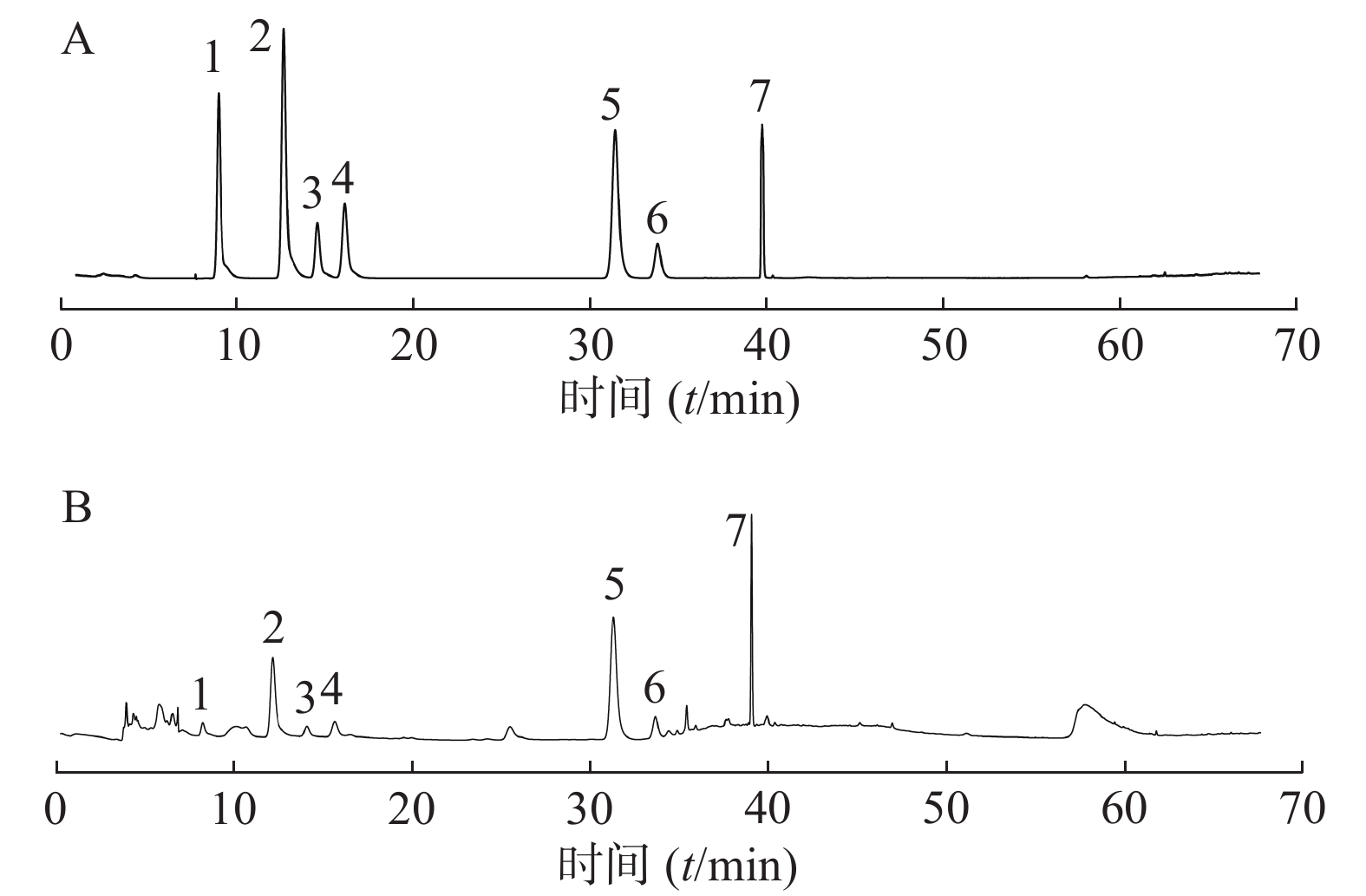
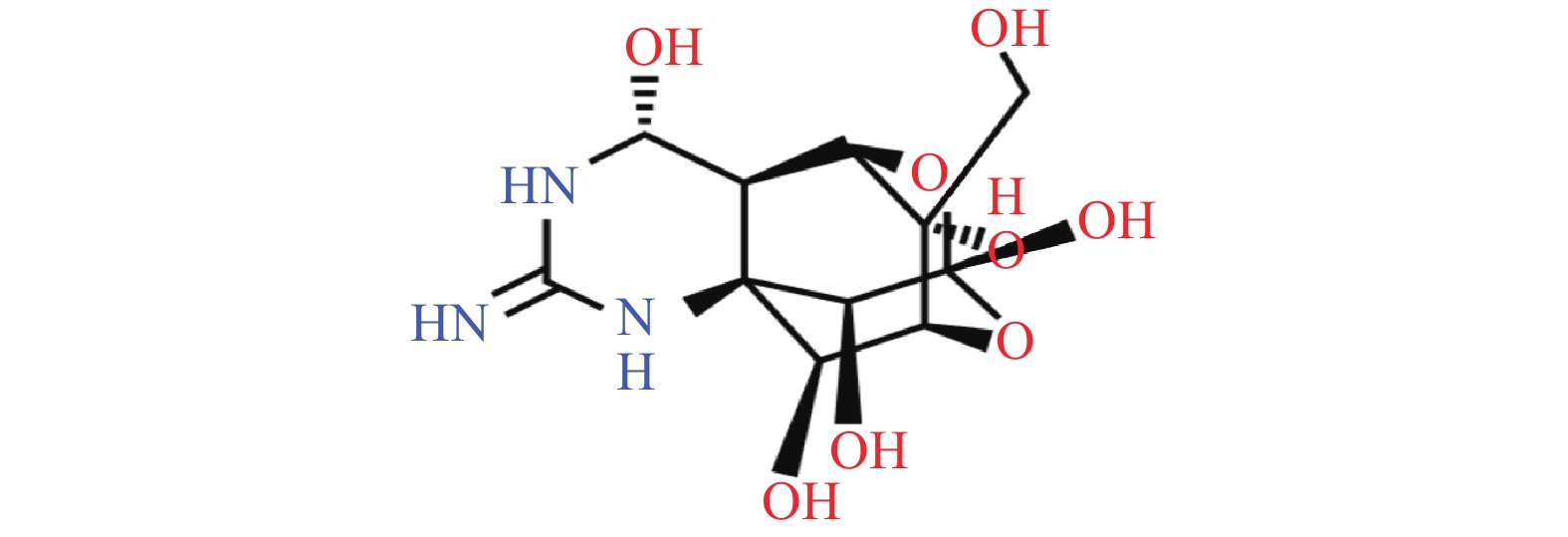
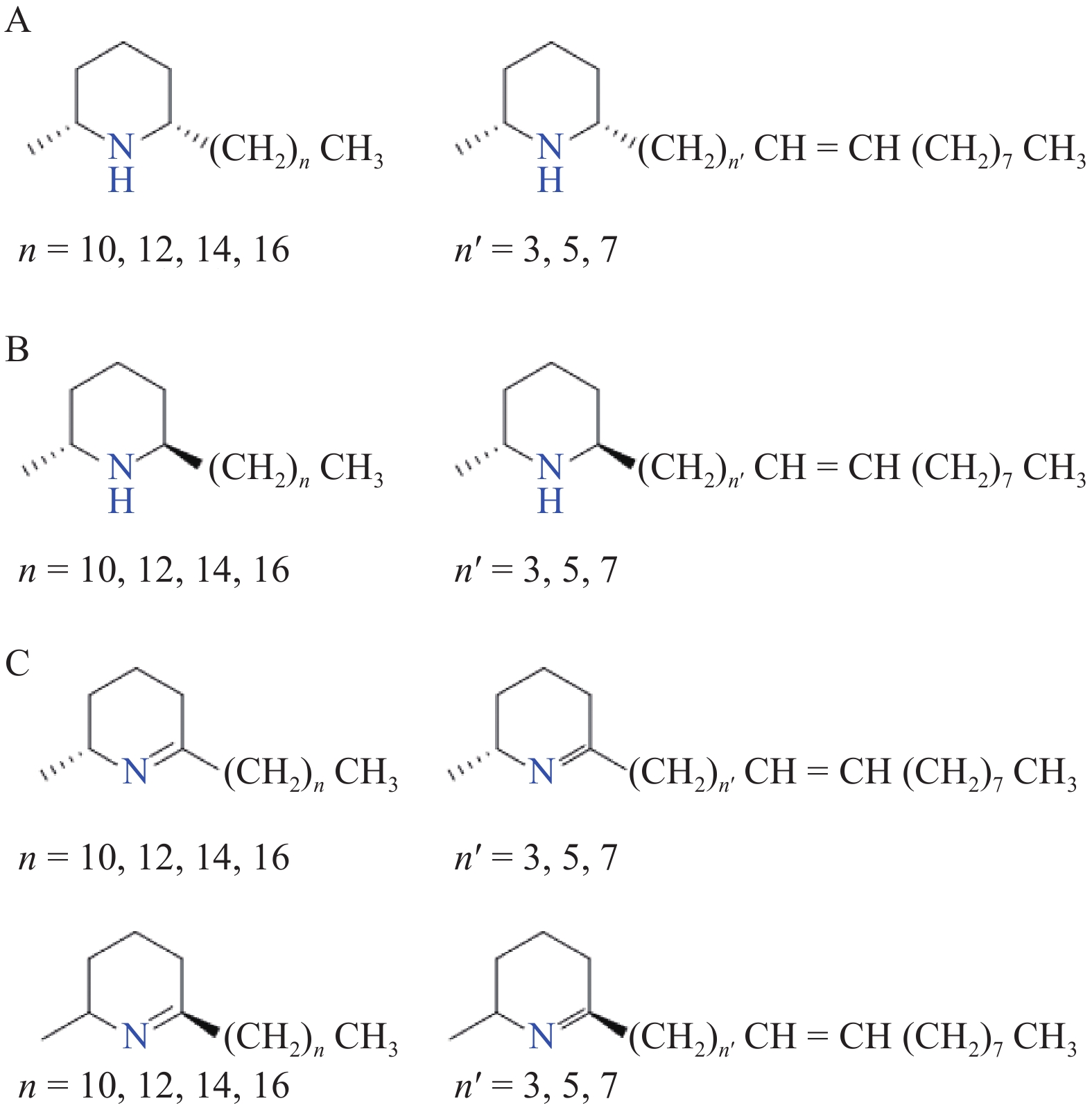
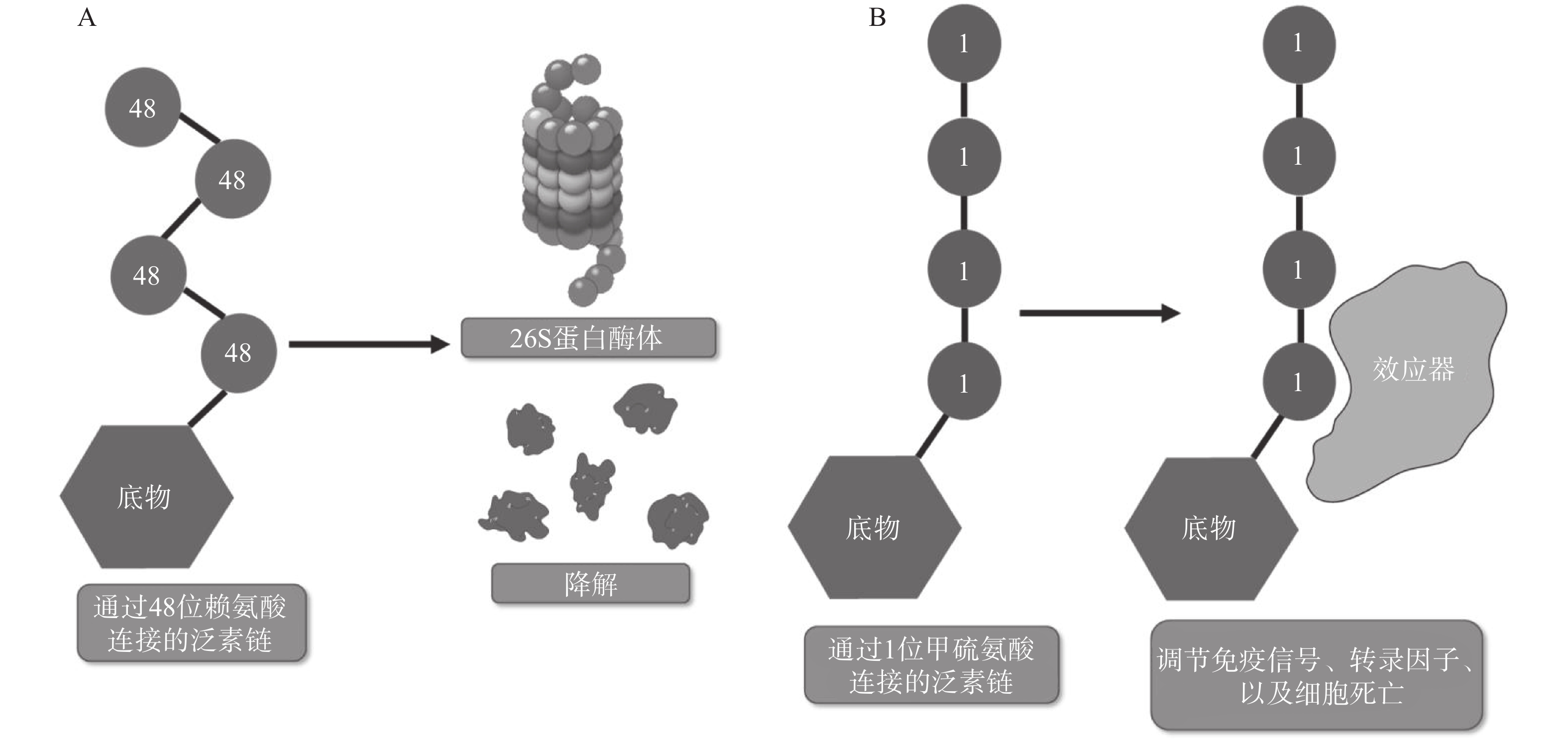
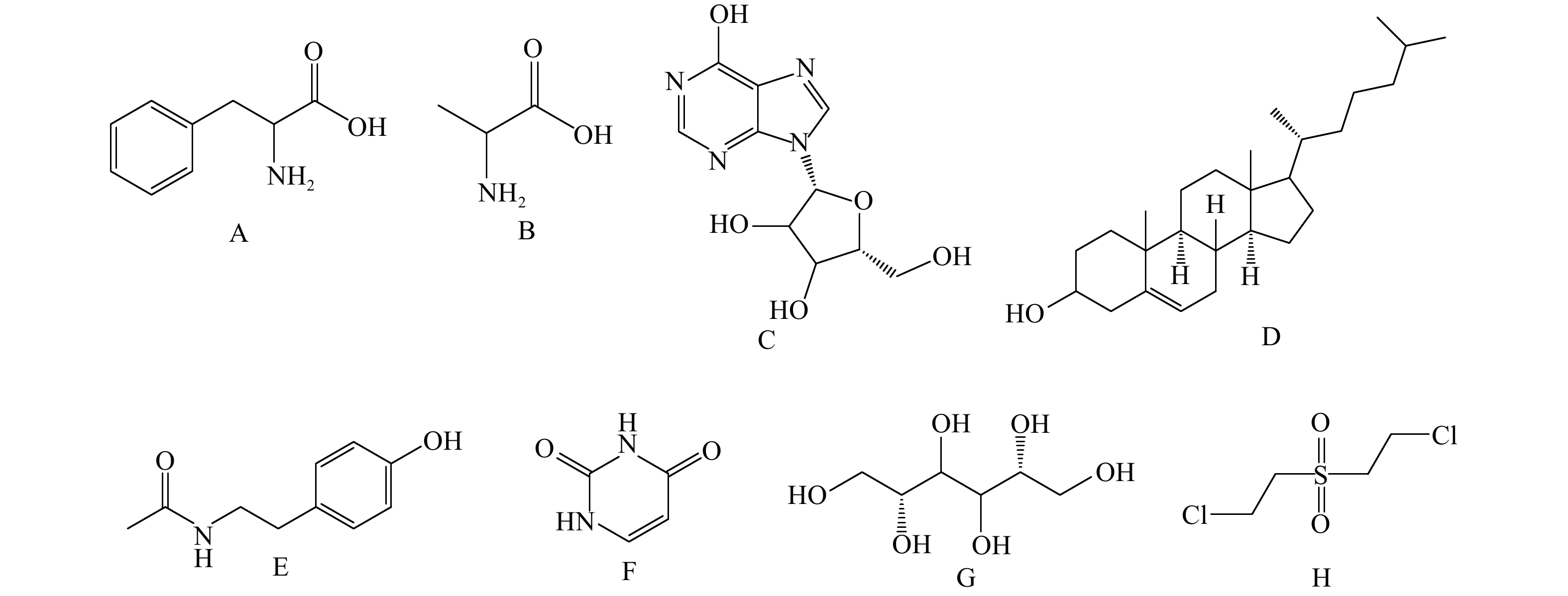

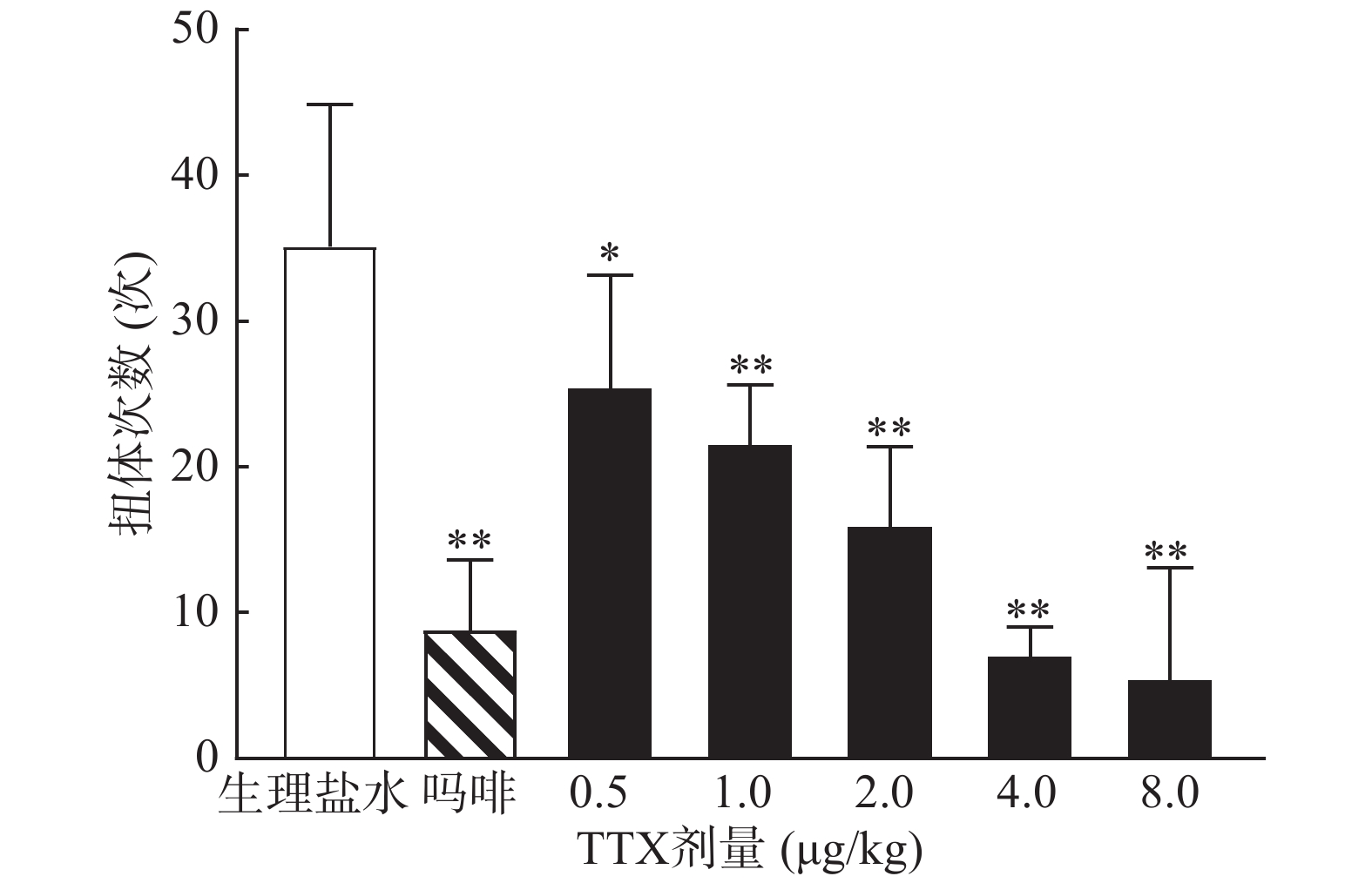
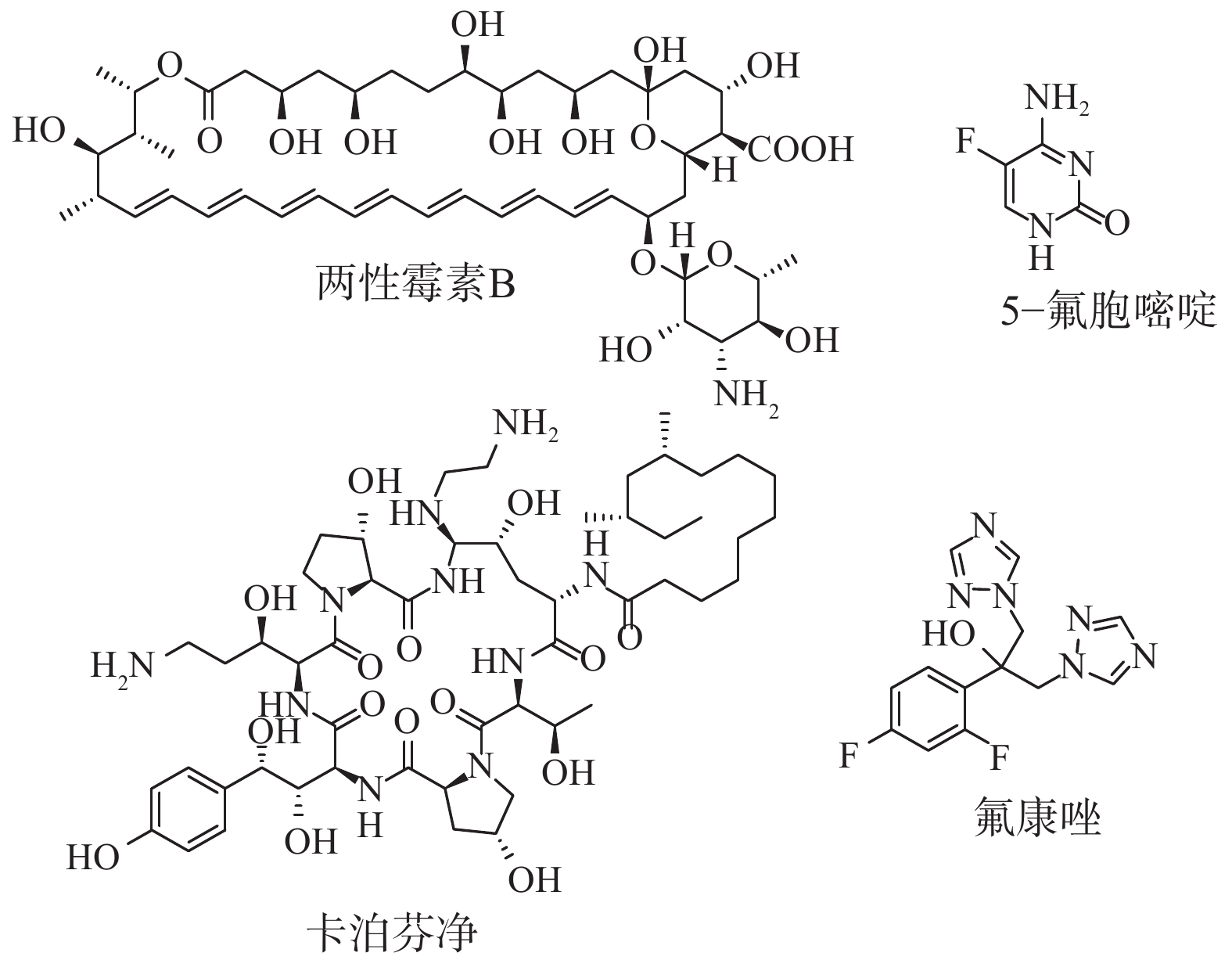
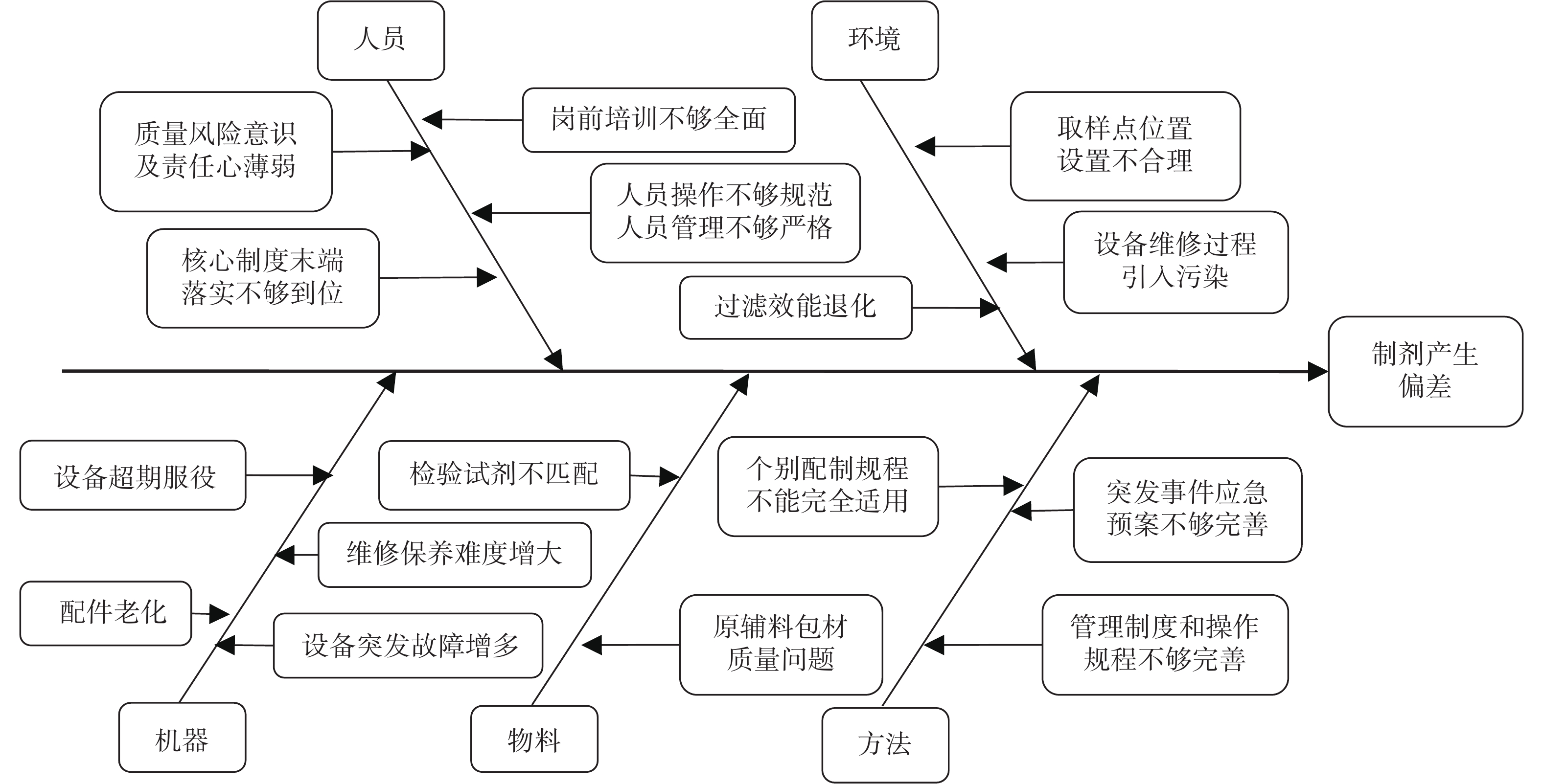
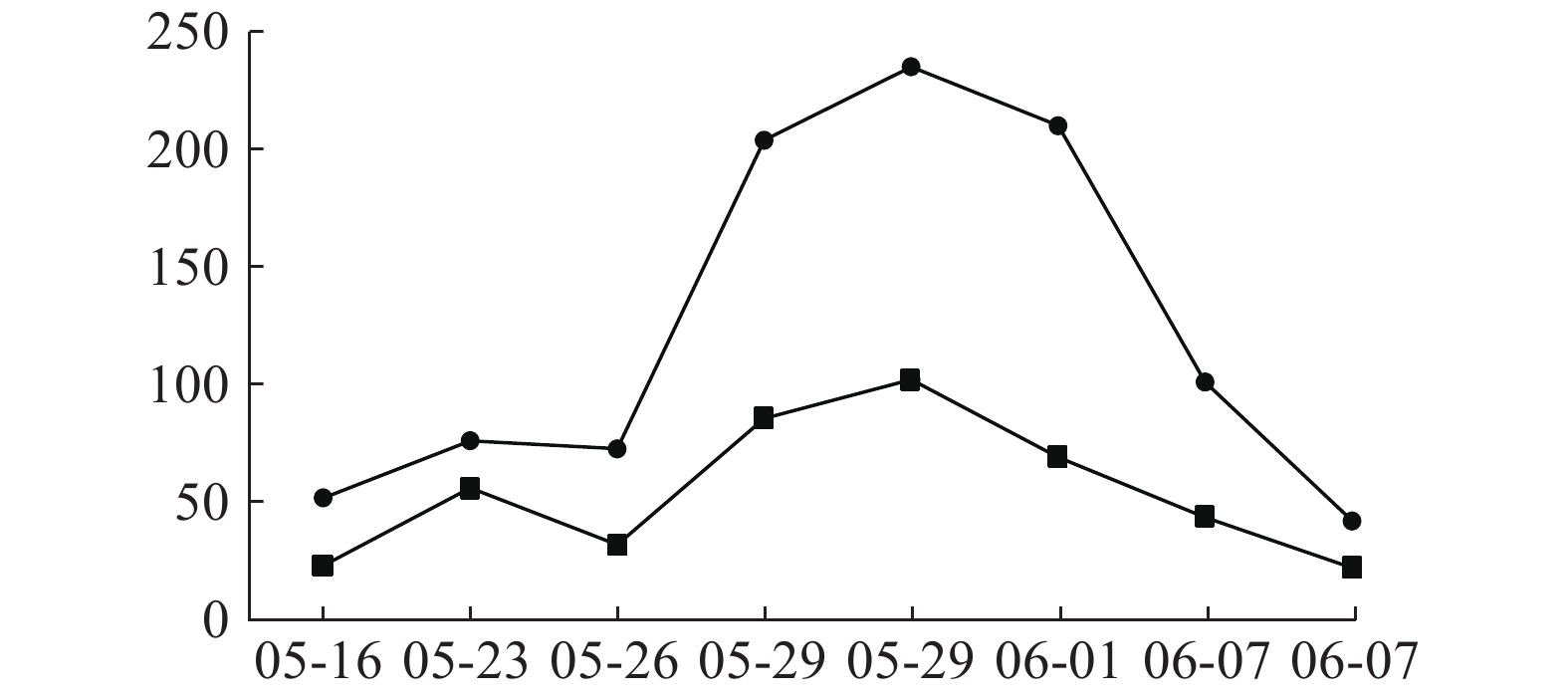
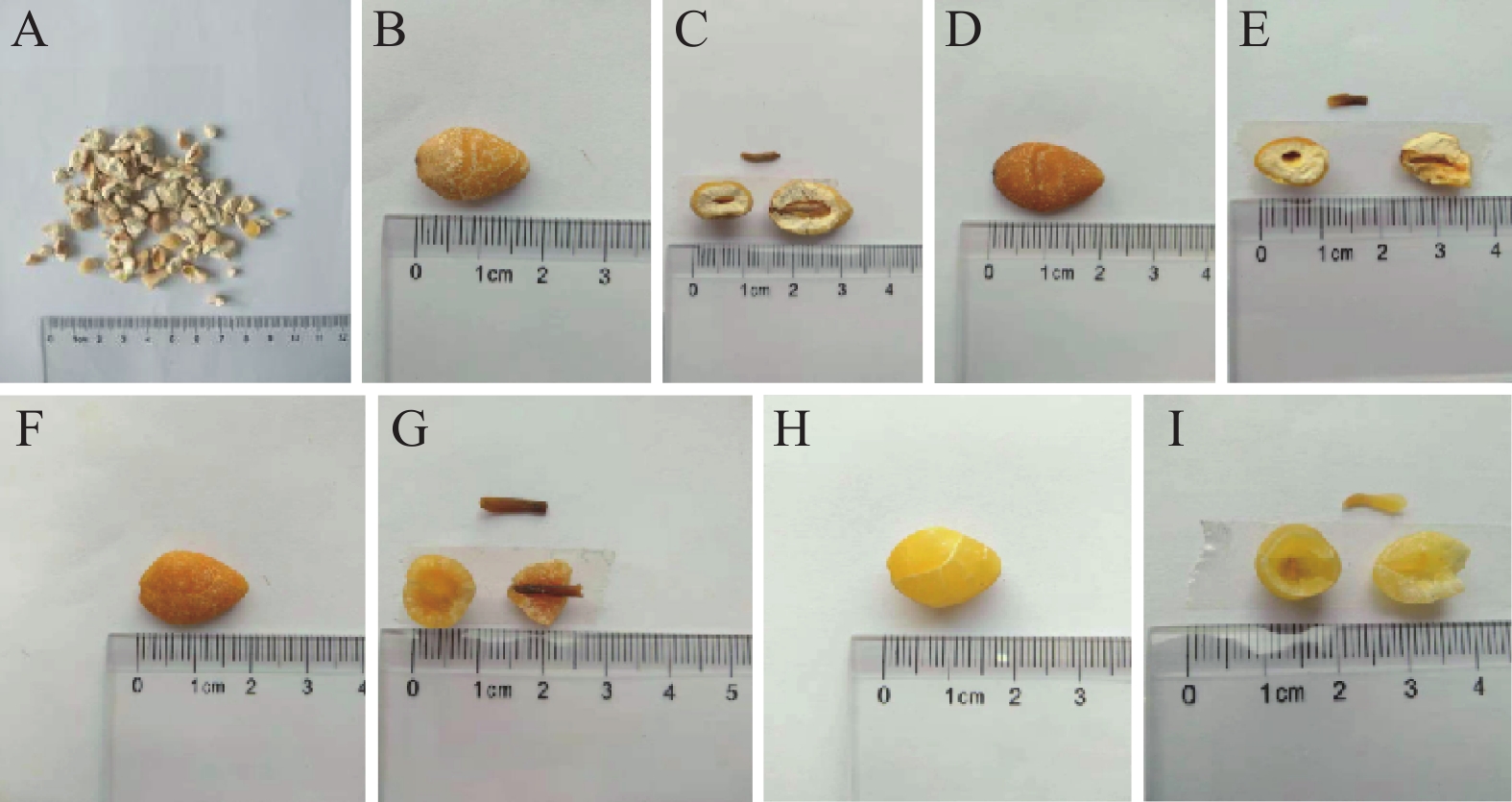
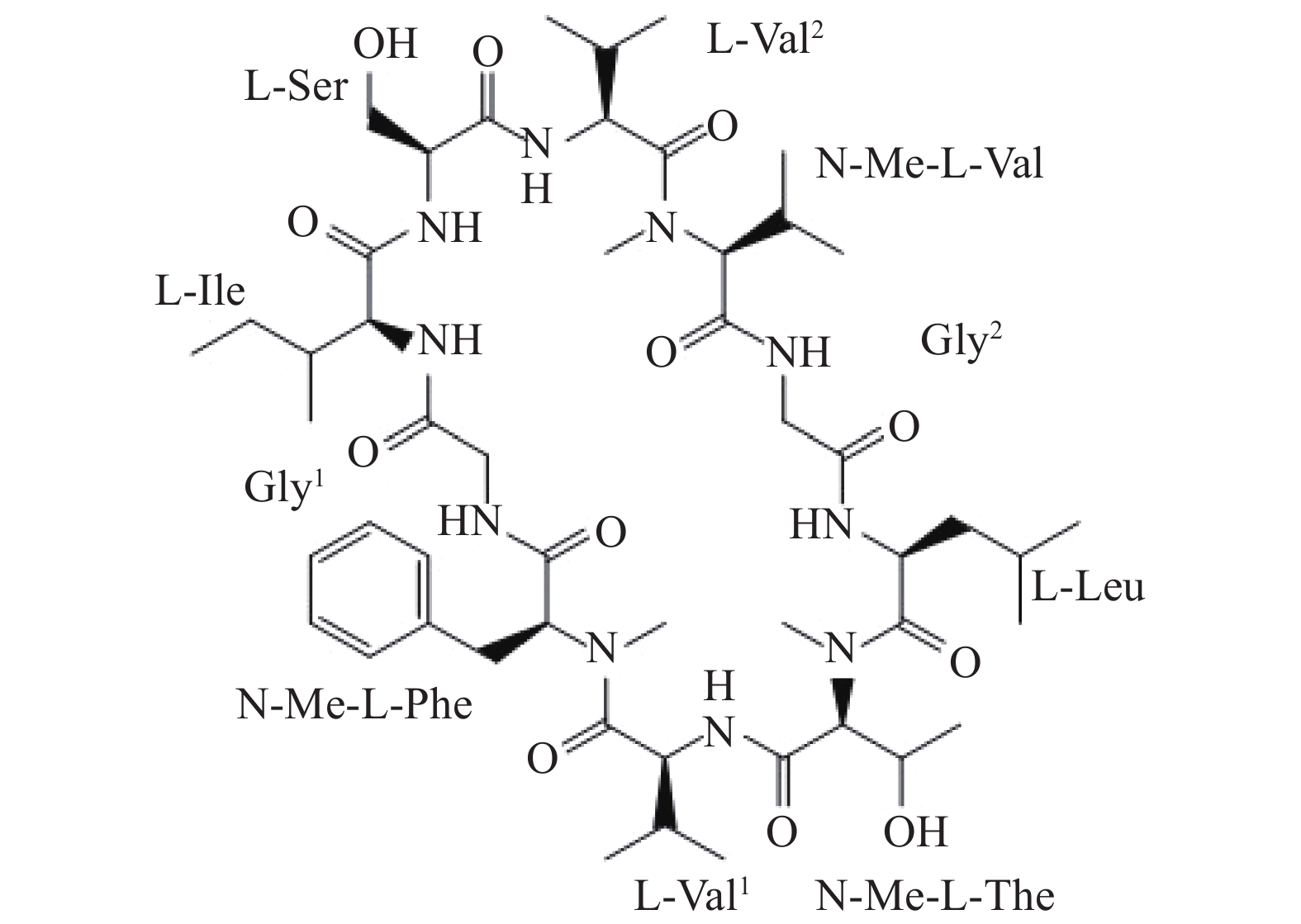
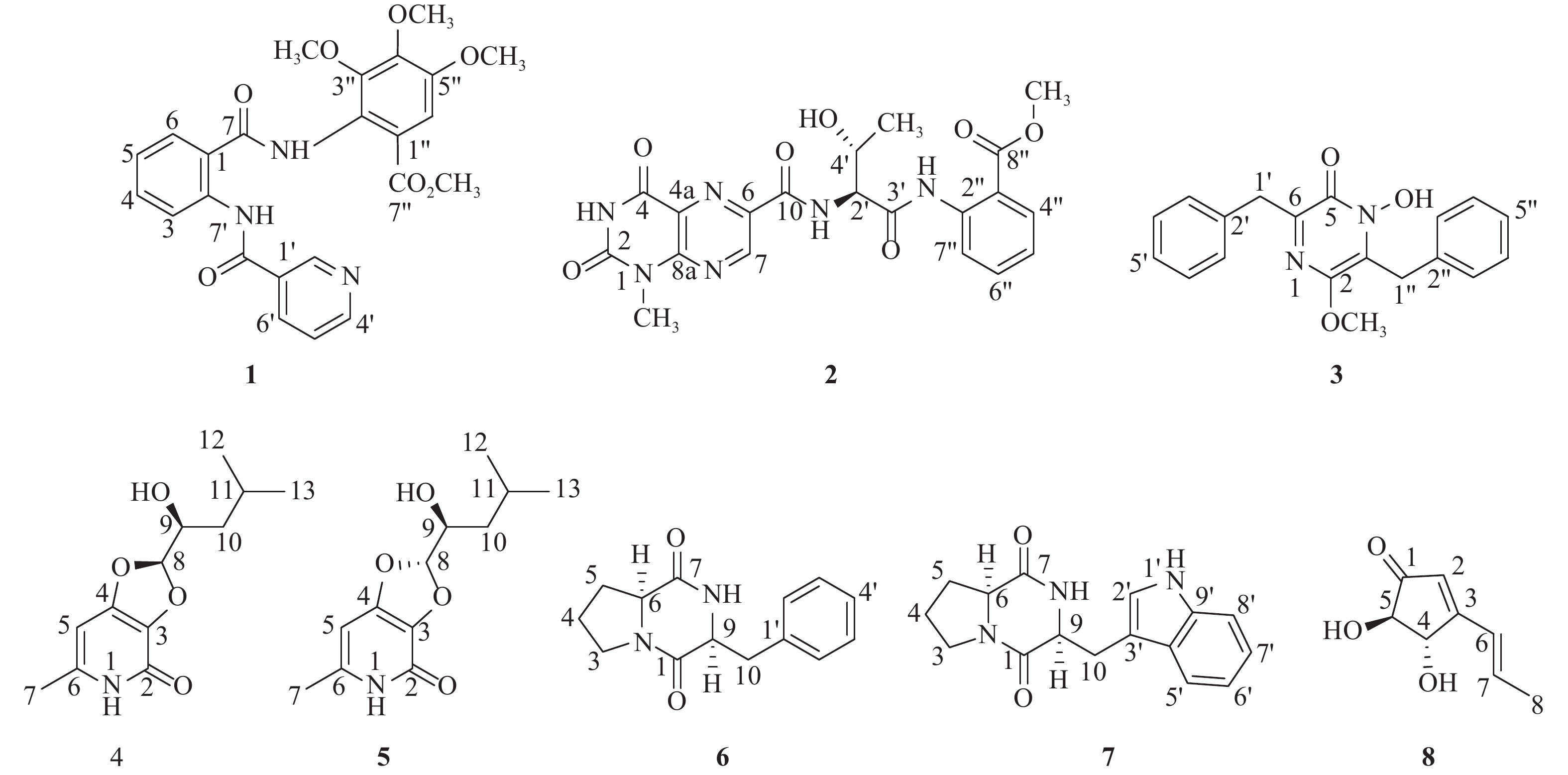



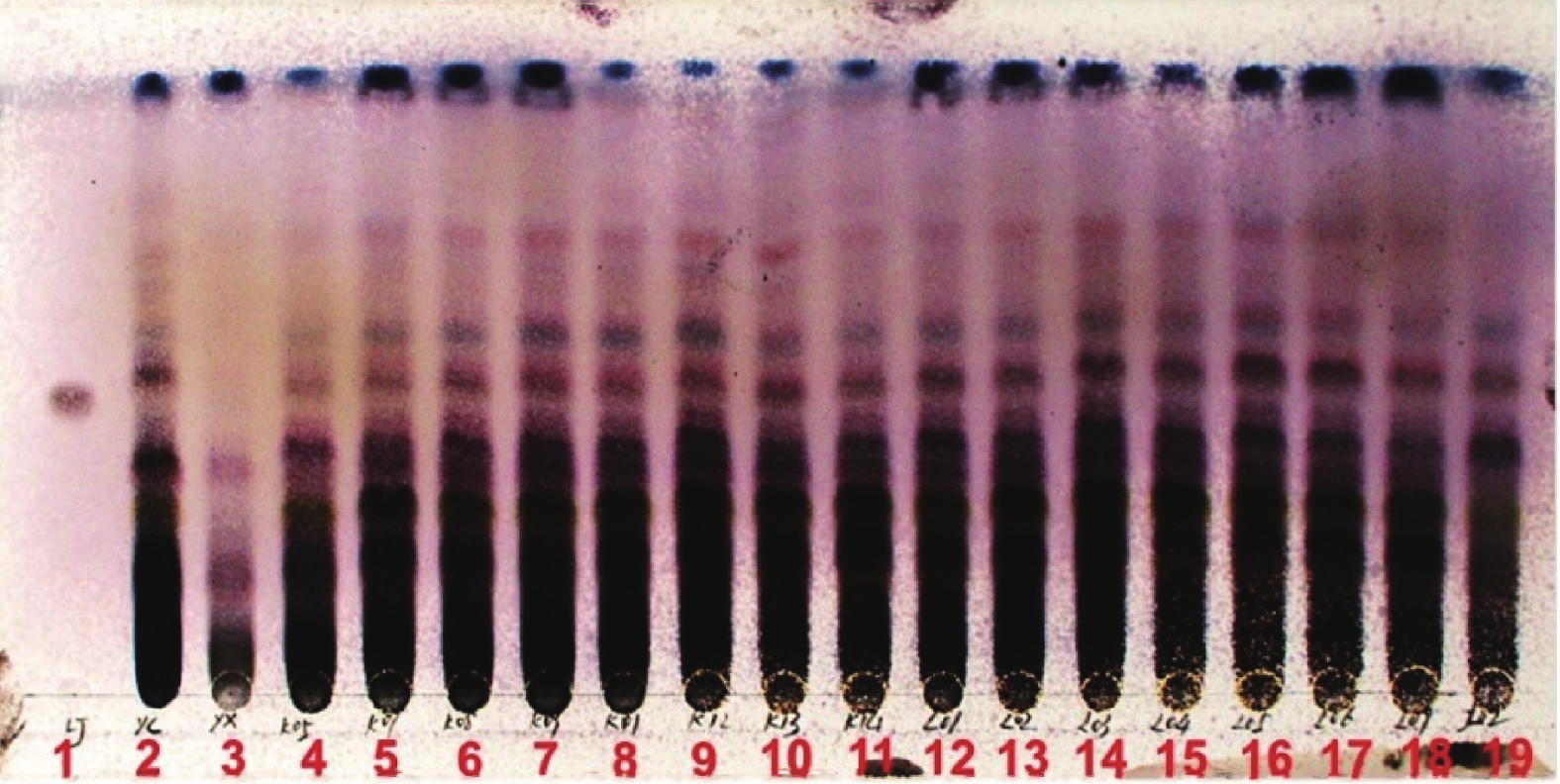


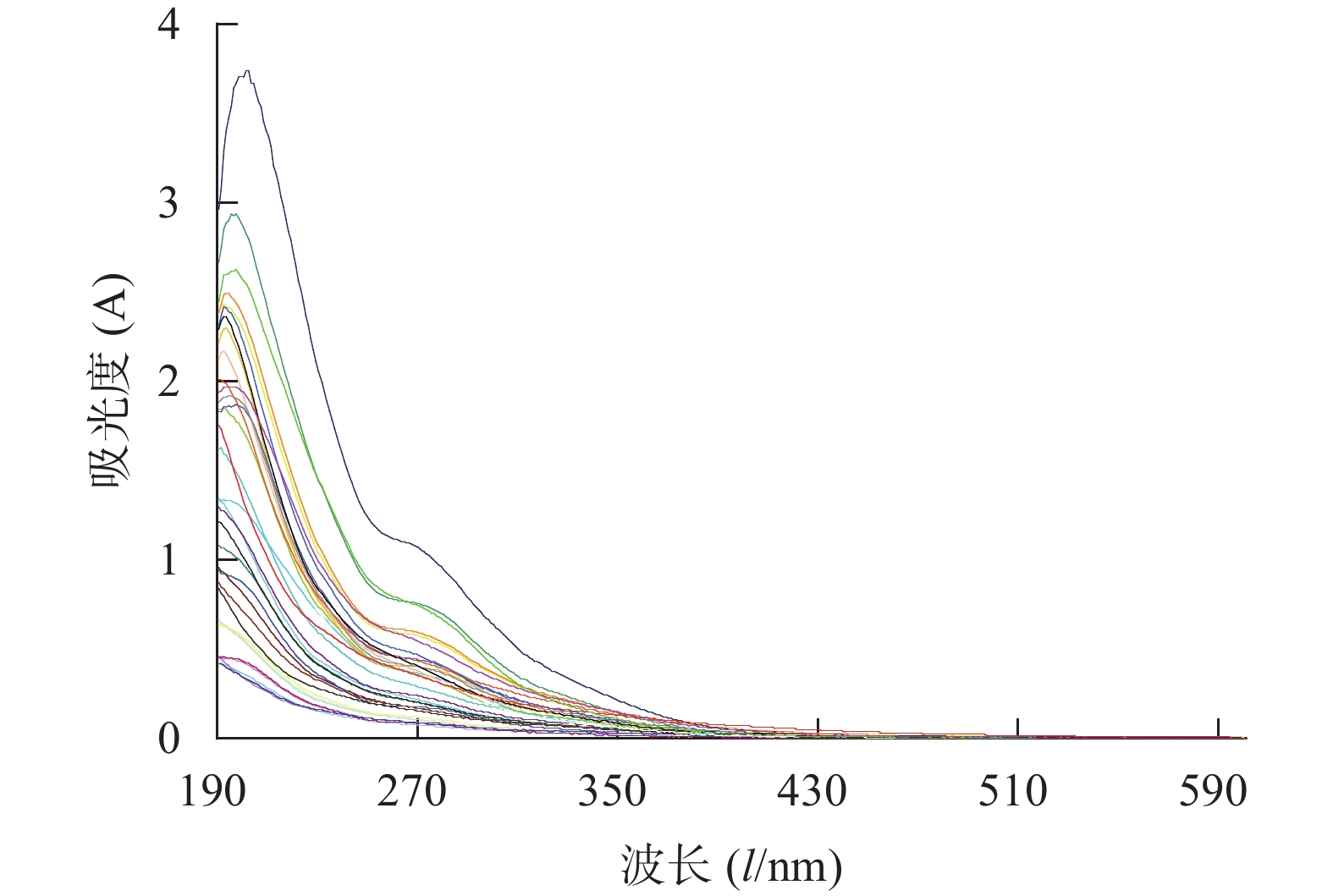
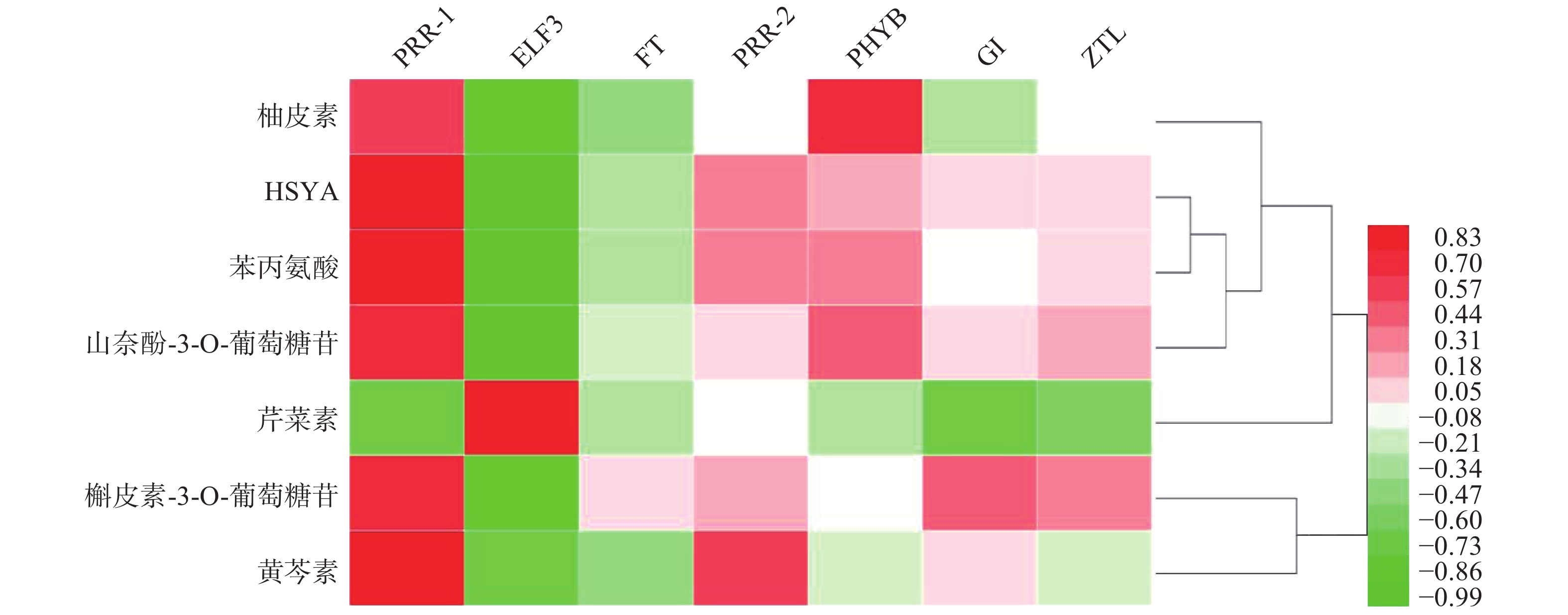




 Contribution System
Contribution System Author Login
Author Login Review Login
Review Login Editor Login
Editor Login Reader Login
Reader Login



 友情链接
友情链接